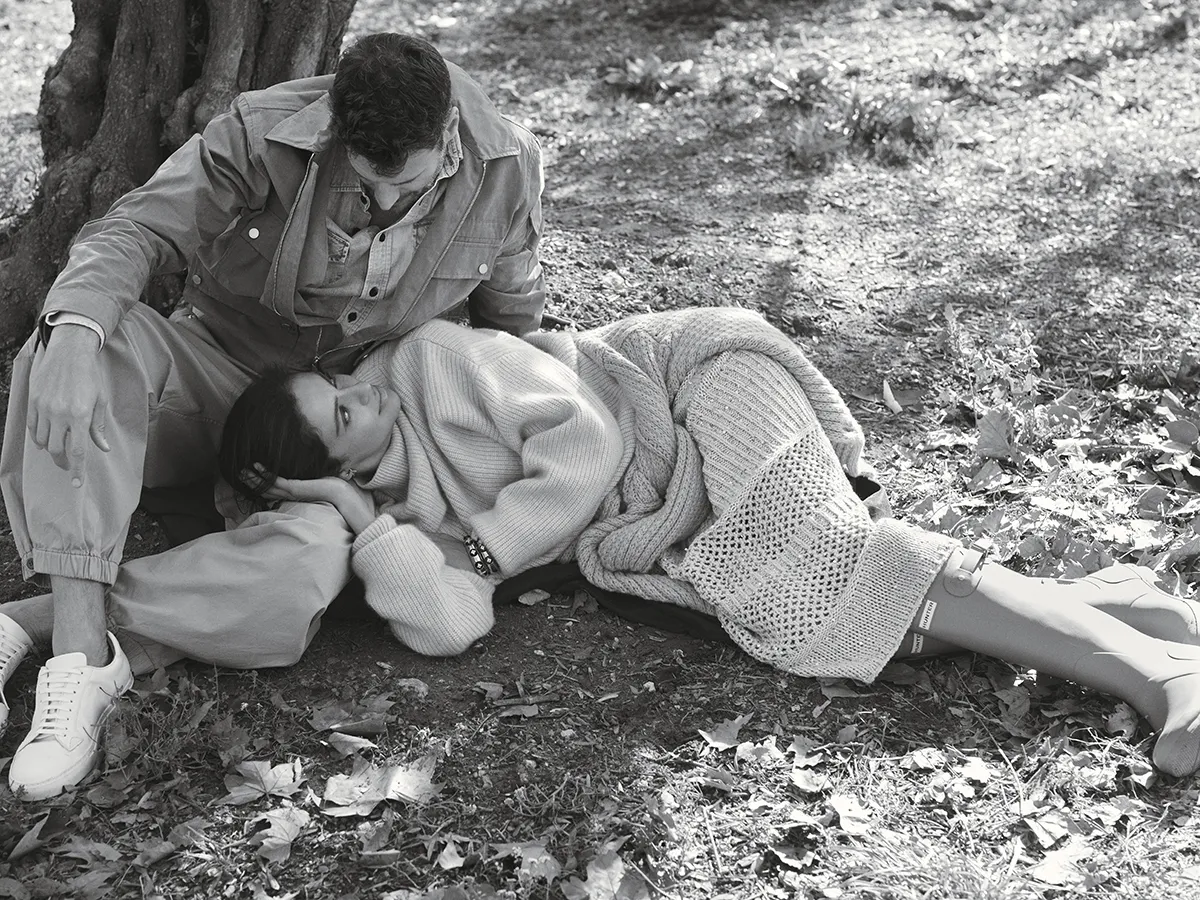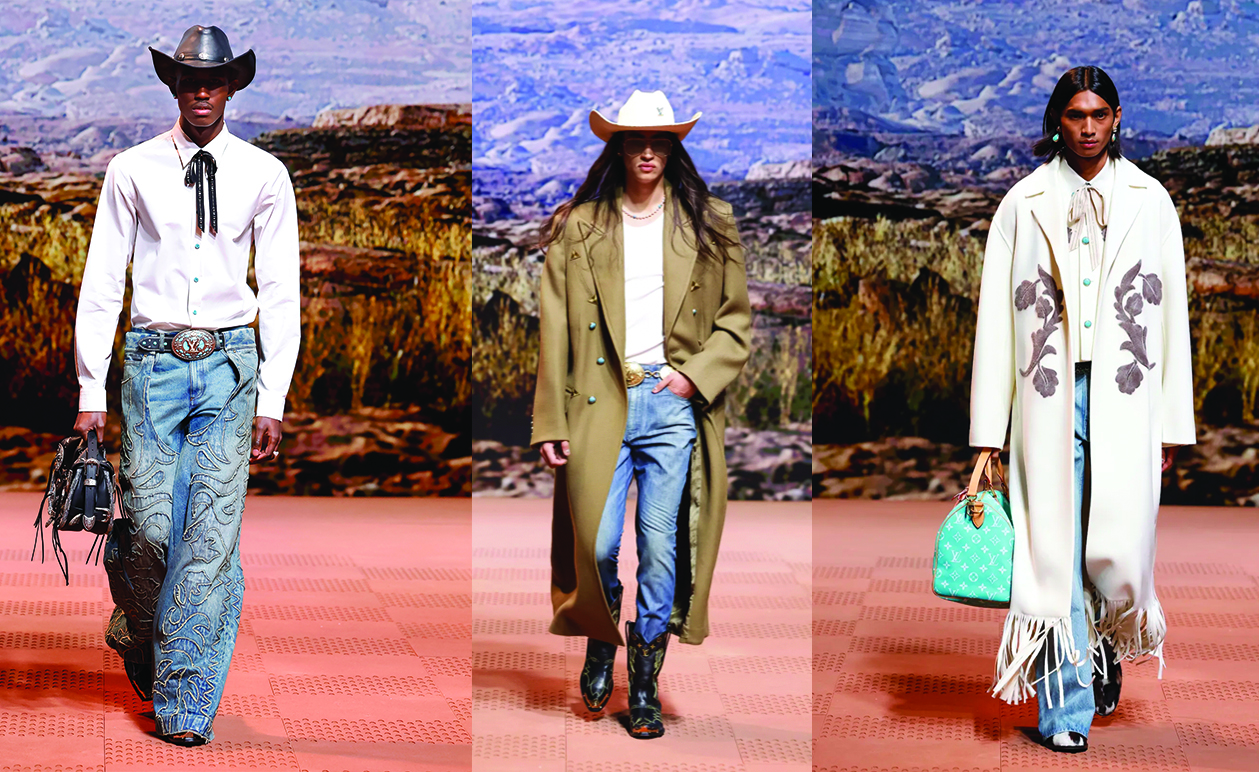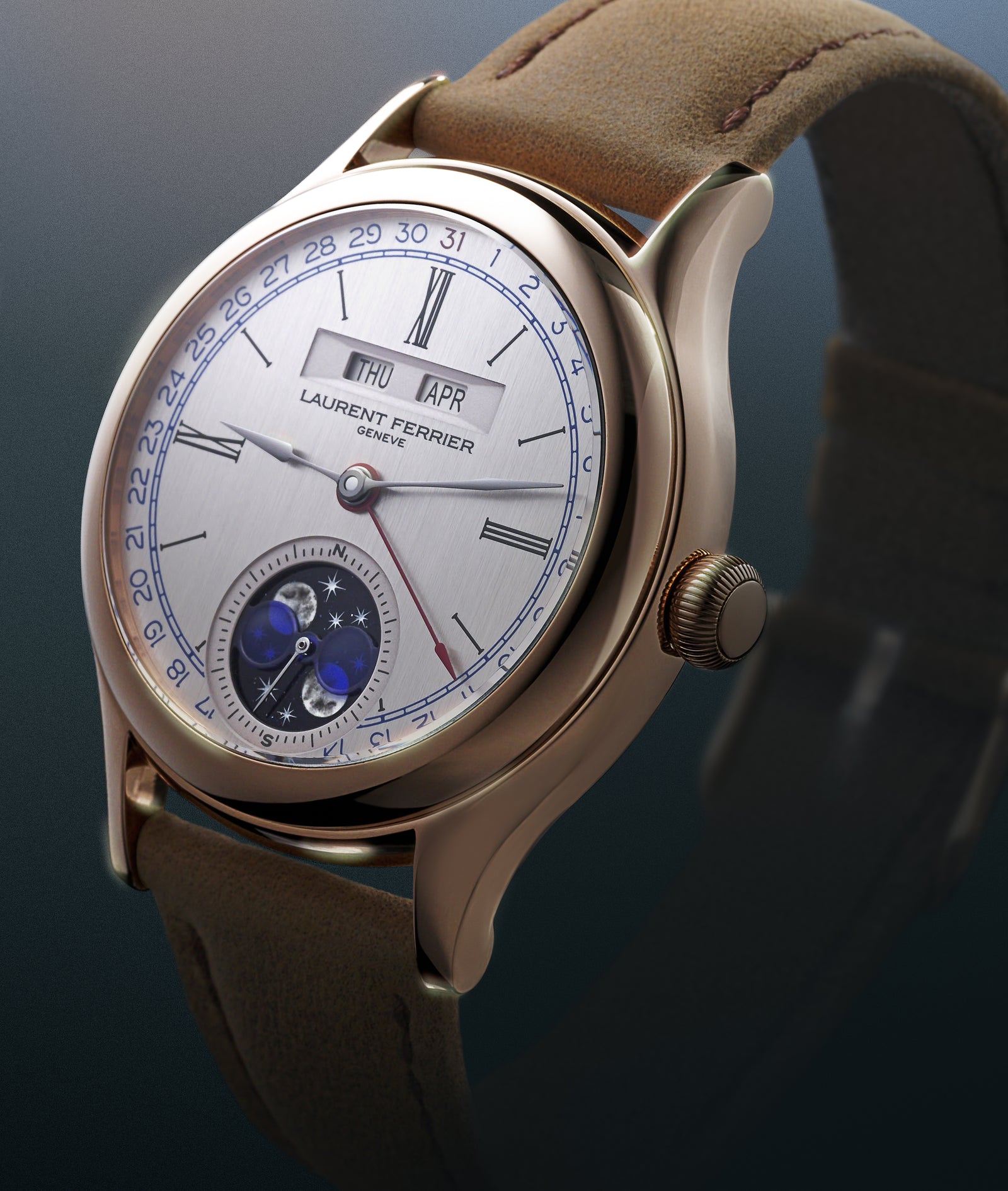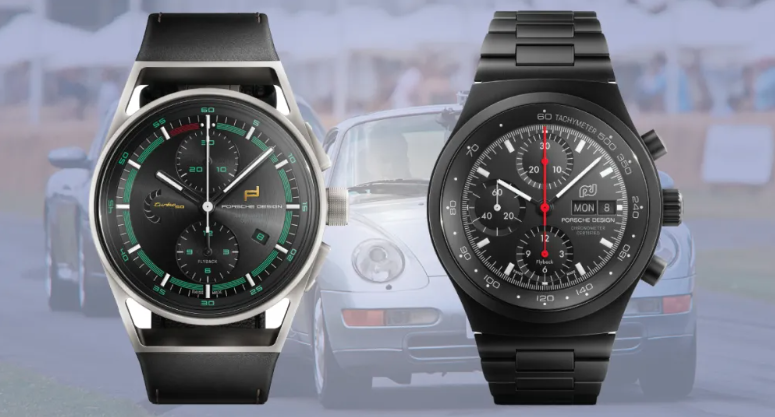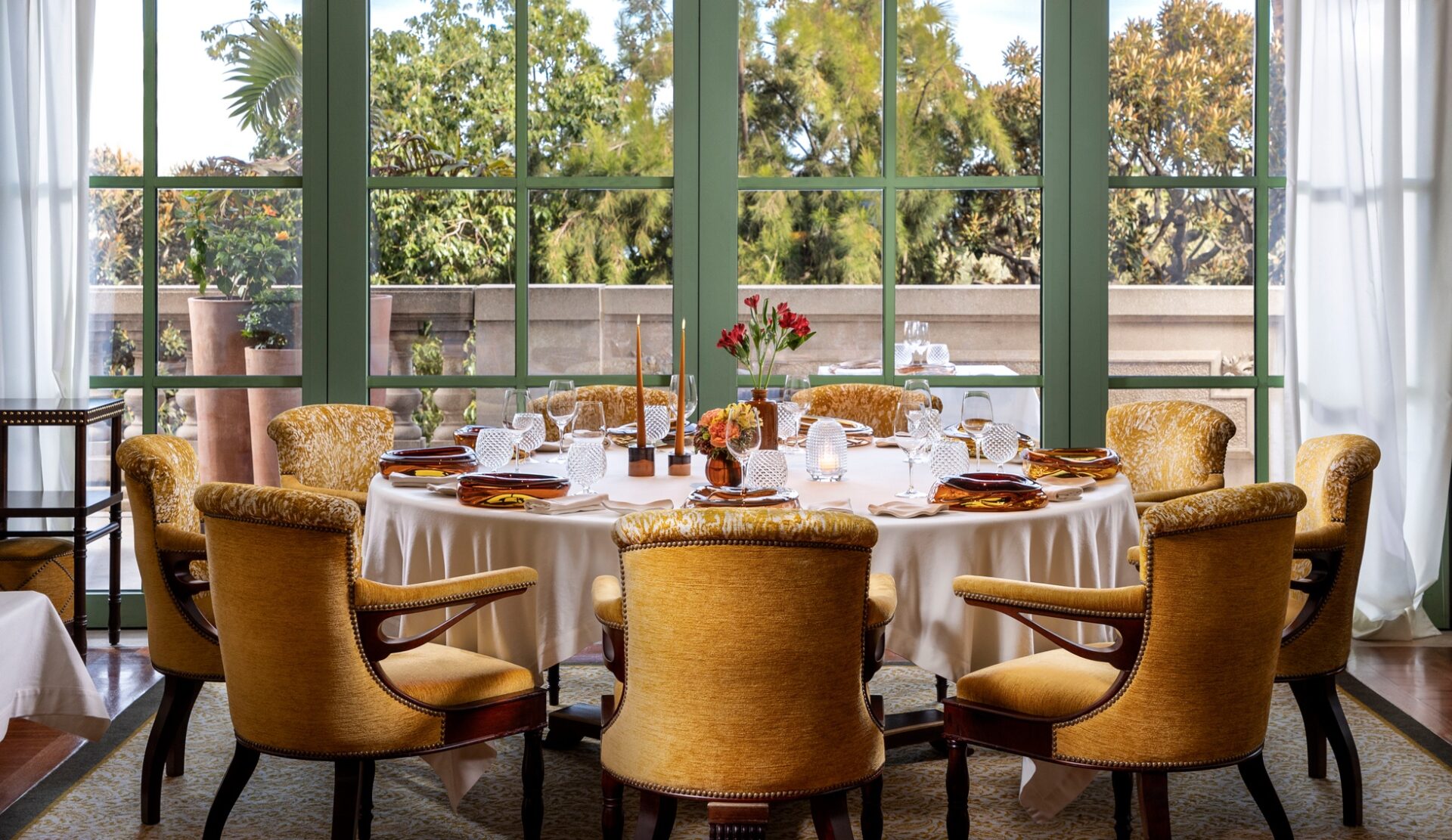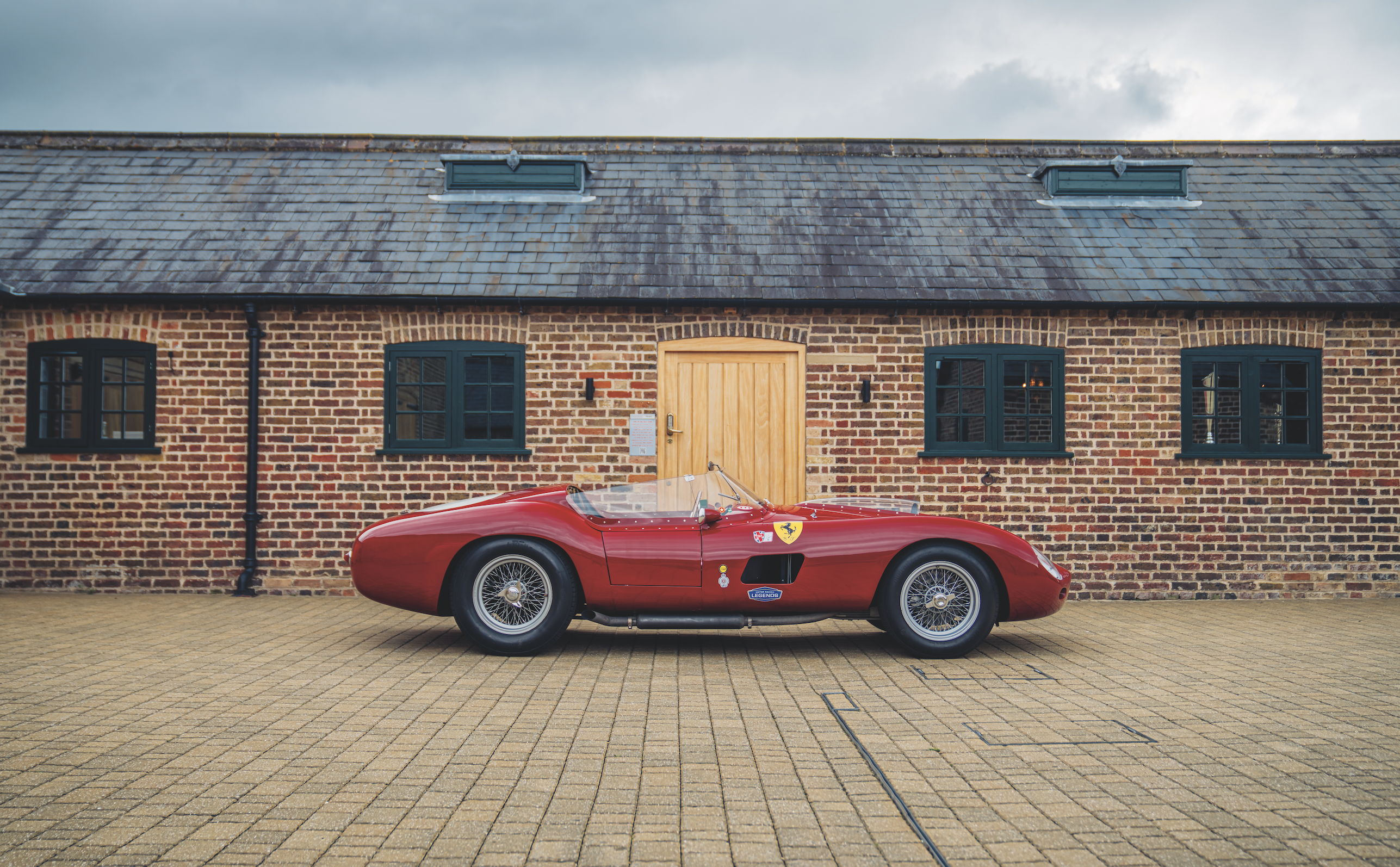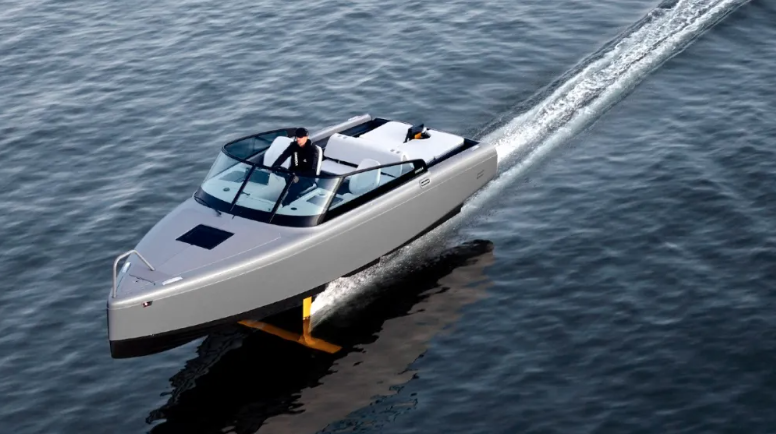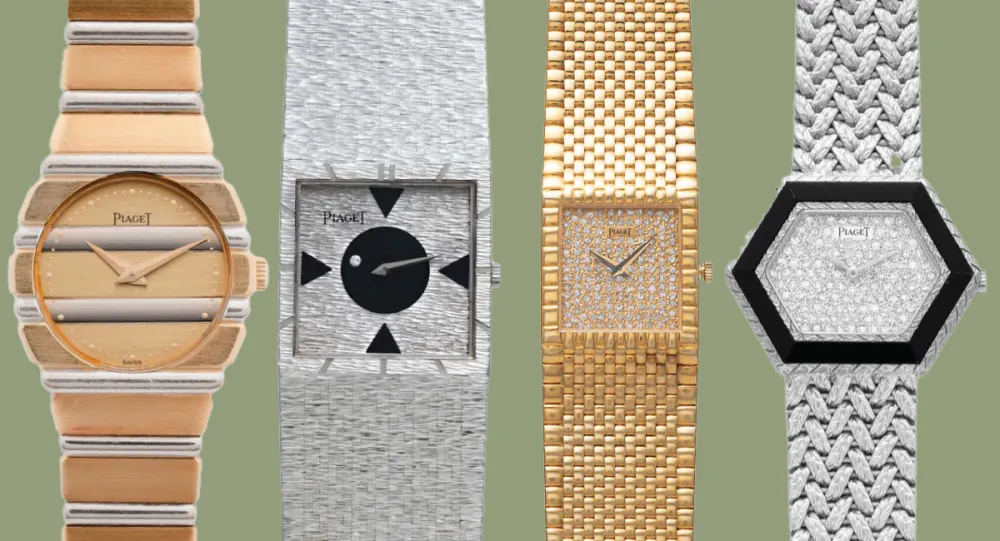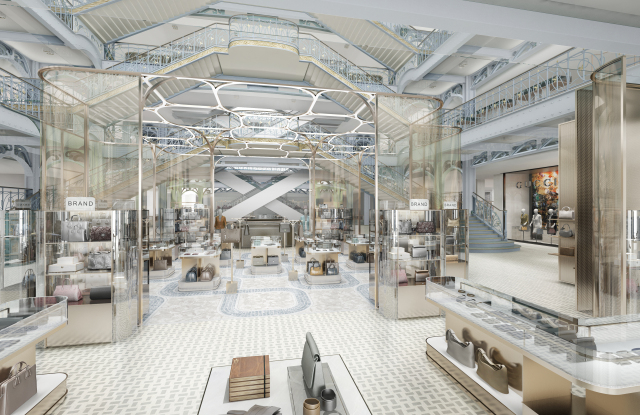
Robb Read: Recasting Retail In A Post-Pandemic Landscape
How the look and feel of shopping in stores is fast evolving in both temporary and permanent ways.
Related articles
Here’s the dilemma: Certain Covid-19-related adaptations to the retail setting might or might not be relevant in the future. It all depends on the impact of the pandemic on shopping behaviour and whether it lasts a year, two years — or much longer. That means retailers must be innovative, agile and resourceful to navigate the challenges posed by the global health crisis and its accompanying economic fallout.
In any case, the playbook for store design and the shopping experience is being rewritten by the coronavirus, forcing retailers to make immediate adaptations for social distancing and sanitising, while accelerating changes already in motion, such as buy online, pickup in-stores or curbside, and showrooming.
We asked experts in brick-and-mortar retail design to discuss their visions for the store of the future, whether it’s retrofitting for right now, or dramatically rethinking the space for the next generation. For many, it’s all about merging hospitality and retail, increased web functionality to link shoppers to inventory in local stores, easily cleanable surfaces, modified customer traffic flow, open spaces with less inventory on the selling floor, shopping by appointment, and flexible fixtures so product displays and shops-in-shop can be readily assembled and disassembled like stage sets.

Peter Marino Manolo Yllera/Courtesy Photo
Peter Marino, architect
“A condominium project I’m working on specifies an elevator with voice command, so you don’t have to touch anything metallic. It’s very eerie. It’s the touching aspect that’s questionable. The reason people go to stores is presumably to touch and try on the merchandise. I think it’s going to take a while to regain confidence in that.
“I think we’ll want everything more modern. I don’t want doorknobs to enter a fitting room — we should just be able to push the door. There will be a lot less touching of metal and small items, but architecturally the changes are not very much.
“After the Depression of 1929 and 1930, everything became simpler. All those gorgeous luxury apartments by Rosario Candela on Park Avenue were suddenly being built with no oak libraries, no oak trim around windows. There will be a significant drop in the use of luxurious finishes. It’s not appropriate in the face of so many deaths and so much monetary loss. Everything we’re doing or planning on will be much simpler, more elegant; we’re even sardonically referring to it as ‘coronavirus aesthetic.’
“I’ve always liked doing very sensual, textured walls. But you don’t want people touching walls anymore, and people don’t want to. There will be a much simpler approach. Certainly less sensual, potentially a little simpler for trends in the next three to five years.
“Recently, I’ve been using cheerful colours including yellow, orange and bright burnt amber for retail. I think that happiness factor will not change. People need to be cheered up.” — Miles Socha

Norman Roberts
Norman Roberts, design director, FRCH Nelson
“We are only partway into this so we don’t really know the long-term and short-term impacts are,” said Roberts. “But we do know that retailers will have to really satisfy customers when they come into the store. The hurdles to get people in become even greater than before.”
Roberts envisions retailers creating more space to give shoppers elbow room and easier navigation, adapting the brick-and-mortar experience to accommodate those shoppers who want to come and go quickly, and those who prefer to leisurely browse through.
“People will have different comfort levels,” observed Roberts, noting that some shoppers will be anxious in a large busy space and will want to get in and out fast; others will feel comfortable, and potentially shop like they did before.
“Part of this will revolve around communication and a lot of signage about express lanes, or full-service lanes — formats we have seen in gas stations and fast food. Retailers must have multiple ways to engage. You could easily drop a self-checkout into any shopping environment. But you have to do a good job of communicating. You will see a lot more overt signage in stores, around the health precautions being taken and informing people about shopping options. This will impact the aesthetics of the space.”
Roberts said retailers in the future will create more spacious environments, and retrofit by reducing the number of fixtures, displaying less merchandise, and even bringing some of what the store offers inside, to outdoor settings. “I could see retail starting to push out to the parking lots and sidewalks, restaurants extending outside, and stores opening up a little more to engage with consumers who don’t want to go into the stores.
“I can see fixtures coming out to the street, and pop-ups in parking lots, depending on the season and climate. People are going to want space and fresh air. One of the big unknowns is HVAC systems. What role will mechanicals plays in the store of the future? There is really not much information on the role they play in spreading the virus.
“Aesthetics-wise, retail is moving to a ‘less is more’ philosophy. Spaces will be minimal, simpler and flexible with open floor plans without designated aisles. An uncluttered, simple space feels comforting, from a cleanliness perspective, and it’s easier to clean. There are a lot of stores that have don’t have the right infrastructure. They need more flexibility.
“On a psychological level, for people coming out of their cluttered, chaotic homes, it’s going to feel very satisfying. You want a big, open floor plan so you can move around, and if you have aisles, you can add directional decals,” so people move in the same direction to facilitate socially distancing.
Furthermore, “A minimal, simple space will be a much better canvas to communicate information on safety, distancing, cleaning, how you check out, where to find men’s clothing, where to find the fitting rooms. There are a lot of new ideas retailers will have to communicate to people.”
With the fitting rooms, “Retailers must make them comfortable. It’s also all about sanitation. A lot of fitting rooms are not very well lit and feel a little icky.”
There’s also a bad feeling around cash, that it can transfer the virus. People no longer like to touch money, or stand at the checkouts where people interact in close proximity, Roberts said. “The use of self- and mobile checkouts is going to accelerate. But self-checkouts need to be easier to use.”
With the country in recession, “retailers are going to have to be very efficient with their dollars,” said Roberts. “A lot of what retail design firms do is retrofitting” rather than completely renovating or overhauling the box.
“We also have to keep in mind that with the recession in general, there is a self-consciousness around flamboyance and extravagance. We are entering a minimalist time. Ten years ago, we saw that happen. The merchandise radically changed. People became self-conscious about being too flashy about what they bought and wore. It’s like what happened during the Great Depression. It killed a lot of Roaring Twenties flamboyance.” — David Moin

Ron Radziner Courtesy Photo
Ron Radziner, design partner, Marmol Radziner
“Retail will become even more gallery-like. You see the item of clothing but there is only one piece, or one of each colour hanging, and if you want to try that on, the staff will go grab your size, and put it in the dressing room.
“My sense is the whole dressing room experience will also become more important. You could go online, to Tom Ford, and say, ‘hey I’d like to try on that suit, these shirts,’ and then you have an appointment and they have it ready for you, so there are fewer people in the same space at the same time. Maybe it’s your salesperson stepping into what the clothes look like on you, and you do your whole transaction from there.
“In most cases, when you go into The Row or Tom Ford, even James Perse, there aren’t that many people in the store anyway. So to imagine a transformation like this doesn’t seem that hard. The store doesn’t have to get bigger, there will just be a little less open shopping space, and a bit more on the dressing room side. You’d create a better fitting room experience that doesn’t have the narrow hall with a bunch of rooms, but is something more gracious. You may see another person as you go in and out but barely, you’re within your great room, maybe it becomes three to four times the size it is now.
“We did the first stores for Vince, and that’s different; it’s really nice stuff, but it’s more stuff. I wonder if stores like that or a bookstore are going to have to say the direction of traffic is this way, like Ikea. It will be about guiding people visually with how the shelving and the fixturing is set up. And certainly, in offices and restaurants, too, it’s about spacing between tables and counters. In L.A. we have lower density, but it will be especially difficult in a place like New York, where space is more of a premium.” — Booth Moore

OMA worked on the Galleria Gwanggyo, which opened earlier this year. Courtesy Photo
Chris van Duijn, partner, OMA
Shopping time slots. Open floor plans. One-way aisles. Less merchandise and subdivided stores for easier maneuvering. These are some of the adaptations stores are, and will be, making, according to van Duijn.
After the shutdown, people will be more inclined to enter stores with long sightlines and full overviews for a direct path to what they want, rather than going through narrow spaces putting people in close proximity to each other. Shopping malls and developers could incorporate social distancing by dividing one store into two to easily organize the goods on display.
“If you look at retail from where you are today, you could imagine less quantity, less occupancy [for shoppers], less physical interaction, less social, less vertical and maybe more quality and a more personal experience.
“How this works in the long term, I am a bit sceptical that people will really change their habits too much,” van Duijn said. “People are social animals and I can see them going back to their original habits.”
The OMA partner noted that in Asia, where shopping malls and stores have reopened, people wear masks and “that’s basically it.” Whereas in Europe, there will be greater physical change to stores, with layouts and how people circulate. “In Asia, the masks basically compensate for the social distancing. People are used to them. In Europe, it’s still very new. There is not that level of comfort with masks that there is in social distancing. It will be interesting to see how this behaviour affects the coronavirus infections again and whether there will be more waves.”
Given the need for social distancing, the social aspect of shopping is changing. Consumers may not bring family members or friends along. “It’s no longer a social experience that you enjoy and hang out,” van Duijn said.
Having designed The Galleria, a department store that opened in late March outside of Seoul in Gwanggyo, the OMA partner said changes have not been requested. At this point, the pandemic has changed consumer behaviour and the number of goods being produced and those factors may change retail layouts, he said.
“Brands will probably produce fewer goods. Some of the luxury brands have already said that for 2020, we won’t do any more. We will see you back in 2021,” he said.
With fewer designs and less production, developers, department stores, specialty stores and shopping malls will need to adapt, van Duijn said. “What’s interesting is the urge to buy things became much less in a very natural way. People, obviously, shop more online. That’s logical. But you shop for what you need and not so much for fun. Morally and ethically, that is good but at the moment that will not help our economic system. There will be many victims there.” — Rosemary Feitelberg

Glenn Pushelberg and George Yabu of Yabu Pushelberg Courtesy Photo
Glenn Pushelberg and George Yabu, Yabu Pushelberg
Pushelberg: “As a result of social distancing, the scale of stores will remain large or grow larger, made possible by what will be affordable real estate. In a multibrand store, I believe there will be more compartmentalization, going from room to room in a graceful way that simultaneously controls traffic and creates intimate brand experiences. La Samaritaine, a department store we designed for LVMH in Paris, is by circumstance well suited for this new future of retail. The aisles aren’t deep, and they don’t have the traditional floor plates of a department store. Aisles are narrow as a result of the heritage atrium building that houses the store. Subsequently, traffic flows in an upward ring, moving guests vertically from one shopping area to the next.
“At the end of the day, retail is a form of entertainment. It’s an opportunity for something experiential, and I believe there will be a cautious movement back to retail as a form of entertainment.
“It won’t be the speed of shopping or the efficiency of it, it will be the form of it. There have been some retailers such as Maison Kitsune, for example — they’ve built a café, where they produced the music. To me, the next step is a place you can sit down and have lunch, buy the music, leisurely look at the clothes or have the clothes come to you in a larger restaurant.
“Restaurants in their traditional sense aren’t going to work well either because people will need to be spread out, but if you can add more experiences and add on to the purchases, you can actually make something that works. To me, there will be more blending.”
Yabu: “People want to return to stores and make purchases knowing how and why something was made the way it was. Perhaps at some point with the way real estate will be changing, allowing for more expansive retail spaces, the start-to-end experience can be a little more drawn out and people can also experience the craftsmanship behind what they’re purchasing in this multifaceted destination.
“Years ago, we were working on the VIP rooms for some of the Louis Vuitton shops and they took us through their workshops, and to us, the workshops were fascinating. I was almost expecting a store or restaurant to be part of the workshop. To me, that whole thing can be combined.
“We designed a store for Lane Crawford in Beijing for a family looking to essentially create their own small-scale shop in the sense that it would allow for semi-private shopping. Even though the store was open to the public, there were times the client wanted the option to invite friends to shop without other guests sharing the space. We created subtle ways of closing off shopping areas with the use of folding doors, similar to those which may be found in a graceful European home. You get a sense that there’s a room beyond where you stand; however, you must be invited to enter. A similar concept could be put in place moving forward to orchestrate traffic flow whilst still enhancing the shopping experience.” — M.S.

Robin Kramer
Robin Kramer, founder, Kramer Design Group
“Everything that would have happened in the next three to five years will be happening in the next three months. The health crisis is definitely causing people to be much more creative, to think outside the box, and not hold onto old thought processes. But what makes retail great are the simple things we need to go back to — great merchants, great assortments, edited fleets.
“My company has always been focused on the customer experience, and now it’s how you make the consumer feel comfortable going into a store, touching things, trying on things. You have to be incredibly creative to offer new solutions without losing your brand image, whether it’s curbside pickup or logistics, how do we stand out and do it through the lens of the brand? Curbside pickup at a grocery store needs be very quick and efficient. At Bottega Veneta, it might be very different, involving more customer service, a deeper thought process.
“With the beauty store for the future, how do you look at testing and servicing customers in something as intimate as beauty? We are working on a new concept for a multibrand retailer which will contain beauty, wellness and health.
“Even in ready-to-wear, the opportunity is service. Bergdorf Goodman can take high-end service and personal shopping to a whole new level.
“Jewelry is ripe for the next innovation. No one’s reinvented the jewellery store format. It’s something we are looking at — how you change the jewellery experience. It’s not enticing to go into a store and be limited by that caseline. It’s been too precious of an experience. High end needs to be more accessible without losing its sophisticated appeal.
“There is also an opportunity for merchants to bring travel to the consumer. Remember when it was a big event to go to Bloomingdale’s, and see how products from different countries, like India, permeated every department in the store? With less travelling now, merchants should be creative by bringing the world to you through their merchandising.
“We can already see as Europe reopens that people still want to shop in stores. Precautions like masks, hand sanitizer, distancing will be put in place, though people will still want to touch and try on.”
Among Kramer’s recommendations for the store of the future:
• Edit and focus assortments so shoppers don’t have to plow through tons of products.
• With checkouts, the more touch-less the better.
• For dealing with taking clothing off the selling floor for cleaning, keep more stock in storage and less up front, and have sufficient service for retrieving what’s requested in short order.
• “Inspire” customers to buy beauty online and encourage trying new products at home. Offering a discount on the next beauty product ordered would help.
• Create areas for service that provide privacy; fitting rooms must be as comfortable as possible. — David Moin

Joan Insel Courtesy Photo
Joan Insel, vice president of brand strategy and customer insights, CallisonRTKL
“We are in the improvisation phase. This is a very dynamic and fluid environment.”
Retailers, she said, while beginning to adapt their store environments to new health requirements and precautions to reduce the risk of being infected and encourage shopping “also have to think about long-term strategies. Stores really need to be flexible and agile to be ready for a lot of change. From an aesthetic point of view, retail design will certainly have to make people feel safe and secure. Emotions are paramount right now. How do you make employees and customers feel safe?
“You are going to need more space, and to reduce the number of fixtures. We are starting to ask the question of what is the purpose of each space. In the past, we wanted people to linger and create a community.” Now, at least until there’s a vaccine for COVID-19, a degree of separation, social distancing, prevails.
“There is this whole idea of spatial repurposing — parking lots that transform some space into pop-ups or drive-in movie theatres, or event spaces where you stay in your car. Mall parking lots are huge and can repurpose a vast amount of space.” That could involve more personal service by employees greeting customers in their cars, at a distance, Insel added.
“With drive-through experiences, how can we make them more of an opportunity for a specific brand, whether it’s REI, Nike or Nordstrom,” among the retail clients that CallisonRTKL has been working with, along with Tiffany & Co., Burberry, Louis Vuitton, Target, Cotopaxi, böhme, Citi, Toys ‘R’ Us, and ABC-Mart Grand Stage. CallisonRTKL was a design partner for Nordstrom’s Manhattan flagship on 57th Street in Manhattan, working in conjunction with Nordstrom’s design team.
“Density used to be a good word. Now it’s a bad word. Who’s driving downtown anymore? Smaller stores is also where we are heading towards. It’s already been happening. Small is the new big, so you can go to where the customer is and not necessarily having the customer come to where you are.”
Among Insel’s other recommendations and considerations for operating and adapting the retail setting:
• Showrooming, so there’s more space and less inventory on the floor to facilitate social distancing.
• Have fixtures that can be lowered from the ceiling or raised, depending on the product display. Fixtures should be portable, and packable, to readily assemble and take down fashion presentations and exhibits “almost like stage set design.”
• Flexible floor formats, without carpet pads, so areas can be easily enlarged or downsized depending on selling trends.
• Redirect traffic and customer flow, determine what occupancy levels seem safe.
• Integrate voice command like Alexa or Siri and mobile apps to get directions to the items or department you want, to limit meandering through the store. The technologies could also be used to request services, or adjust fitting room lighting.
• Virtual, augmented and mixed reality to see how you look in different outfits or cosmetics without trying anything on or applying any makeup.
• Contactless payments, such as Alipay.
• Automatic doors. — D.M.

Coren Sharples Courtesy Photo
Coren Sharples, a founding principal, SHoP Architects
For the store of the future, establishing a sense of community and personalized experiences are increasingly important, said Sharples. “We don’t need a physical space to sell things. Obviously, we’re doing this all the time without a physical space. We can move volume online, through Amazon — anyone can do that. We need physical spaces to have the experiences. Stores are really going to be much more about places where you can connect and strengthen relationships and experiences.”
One of her projects, The Company Building at 335 Madison Avenue in Manhattan, is being renovated and repositioned as a tech hub for start-ups. Located a few blocks from Grand Central Station, The Company Building once housed the two-floor Daffy’s off-price store, which was “walled off from the rest of the building,” Sharples said. The new retail component, which is the next phase of the development, will be easily accessible.
Rather than target a big-box tenant, a marketplace is being created. “The idea is that this is an extension of the start-up community in the building,” Sharples said. “We completely opened it up to the lobby and added an extra floor, so it’s part of the experience of the building.” The space could be used by start-ups for product demos, focus groups or pop-up shops. “It’s about community, small-scale, adaptability and low-barrier entry,” Sharples said. — Rosemary Feitelberg

Mike Riggs Riggs,Mike & Jenna
Mike Riggs, managing director of retail, IA Interior Architects
“From what we’ve heard from our clients, it’s not necessarily a revolution at retail. It’s probably going to be an evolution of those changes that were already needed. Most of the plans we’ve seen from retailers are table stakes — enhanced cleaning, no touch, identifying those who may or may not have the disease, social distancing, spacing, occupancy, how many people you can have in the store. Materiality will likely be more considered,” to identify what the virus lingers on. “I think [store experiences] will be driven less by regulations and more by consumer behaviour. “Concepts we have been talking a lot about leading up to well before COVID-19, I see it really taking hold now — retail brands connecting to the consumer within the physical store environment by evolving more from consuming goods to doing good — this brand altruism. For both Nike and REI, it does affect the design of the store. Maybe we find areas that speak to the community with some celebration of their guests in the locale or region,” who get involved in making a difference in the community. “Having these [aspects] in their environments allows consumers to embrace their tribal tendencies, the desire to be together, to do something good and to be able spread the word of that same goodness.
“There are some real positives that can come from this [pandemic] as opposed to how we are going to be six feet apart from one another in a bubble spraying our hands with bleach every five minutes.”
Also for the store of the future, “VIP experiences might be the norm. Appointment-based shopping and how that might extend and be less elite,” said Riggs.
And for those picking up online orders in the store or curbside, “It will be interesting to see how that all plays out. It’s growing but very slowly in my opinion. There is this idea of people still wanting social interaction and to see other people. The pickup at the curb I think will have a limited lifespan. There are a lot of specialty retailers dependent on impulse shopping. So how do you create an in-store experience that allows people to maybe surveil what is immediately adjacent to the entry and allows guests to see much of the store presentation, while picking up [online orders] in store. How do you make that bridge from pickup to browsing?”
With the retail box, “It used to be about big and small versions. I see extended versions in different, regionalized ways, connecting to different levels of interest in different formats. Focus on these five things that are really important” to a particular community, said Riggs. “I do think people in this COVID-19 current state, just need to be out and to connect. The more retailers create really unique, compelling formats, the more likely they will make that happen. Consumers are going to be really demanding, post-COVID-19, from an emotional standpoint.” — D.M.

Barbara Bestor Courtesy Photo
Barbara Bestor, principal, Bestor Architecture
“We were doing retail concepts for big sports retailers, and they are seeing their stores less as stores and more as places you see sanitized samples, then go home and have the goods shipped to you. It also wouldn’t be hard for a smaller store and would allow you to not stock as much. The whole trend for larger retailers to stuff everything full, and always have 30 sizes of everything [displayed], that’s probably long gone.
“You will have a little more of a concierge aspect to retail, too, where it’s someone’s job to put the sample that’s been tried on away somewhere for 24 hours, so you would need space for racks that are time-stamped. There’s going to need to be more room for infrastructure for people spritzing down and cleaning, a little more like food retail where you have to obey certain retail codes.
“Another thing is materiality. We can do some things with terrazzo, and other surfaces that are more solid and cleanable than wood — stuff you can wipe down. A lot of the work we have been doing is third-wave coffee shops, that might translate into other retail. It would seem to be better in general for health if things are concrete and metal. There’s going to be an innate psychological aspect, the idea that your design looks safe, and feels clean and uncluttered. They say the roots of International Style and European Modernism was a reaction to the first Spanish flu, and the idea of the sanitized hospital as opposed to the slums of Paris, I would see how that would come back as a design style that reads as hygienic. One good example is the new Webster store in L.A. by David Adjaye. It’s all pink concrete and looks like it could be hosed down.
“Also, openness — it’s already a huge design trend. I don’t know how much indoor malls will survive, but I could see more tearing the roof off. I could also see more local delivery, a local boutique could drive around the neighbourhood with a dress mobile! That’s something Amazon can’t do.” — B.M.

Shayne Brady pictured at Bob Bob Cité in London, which he designed last year. Courtesy of BradyWilliams
Shayne Brady, cofounder, BradyWilliams
“We are going to see a shift towards an even more personalized service with stores offering customers reassurance that their needs and concerns are being heard, while also offering a luxury experience to entice them to come into the store, not just shop online. Retailers will need to offer the usually exclusive one-on-one consultations to a broader audience in order to create a more customer-focused, brand-facing experience.
“We can imagine brands will offer a by-appointment-only service with slots allocated through mobile apps. This is where the digital and physical collide to allow people to immerse themselves in the brand, engage with customer service and experience the products.
“The introduction of private or semi-private rooms could be created through removal of traditional open floor plans, moving the product from the shop floor into individual categorized capsules. In our forward-thinking vision we have come up with perfectly spaced consultation rooms that allow customers and staff to be safely placed, while the introduction of partial screens means there is still a sense of interaction and personalization.
“As we come out of lockdown, an important factor is to strive for a greener, more sustainably aware world. The planet has started to slowly reset elements during lockdown and the need to continue this is of paramount importance. This is certainly something that brick-and-mortar retail destinations need to consider in our new world.
“Locally sourced materials will be key; designers should be sourcing materials from accredited suppliers to ensure we are giving back and not further harming the planet, whilst also ensuring that we are careful that the emissions produced in the manufacturing processes of the materials is also not causing further damage.
“Customers will likely crave interaction and the elevated service that only comes from shopping in real life. However, there will also be a sense of caution and safety that retailers will need to offer, whilst not making spaces feel clinical or losing the brand identity. The key to successful luxury retail is the total immersion of a customer within the brand. There are ways to do this through the addressing of all our senses, including smell, within the store, the careful choice of materials and a sense of craft to represent the overall ethos of the brand.
“I’ve always been an avid fan of how a certain smell can immerse someone in a fond memory or evoke a certain feeling. Often brands will have their own synonymous smell and so by ensuring that using diffusers to permeate the air, a memory is created in the sensory brain of our bodies. This will also enforce the brand and elevate the overall experience, again encouraging people to step out from behind their screens and into the shop.
“Retailers must vitally consider using materials that prevent the spread of germs. A key point in all our designs is the front-door handle which sets the tone for the design. Moving forward, we recommend using metal door handles in a copper alloy as this material helps to reduce the spread of germs, protecting customers. Also, we think nonporous and lacquered materials, that allow for frequent and more easy cleaning, will be key.
“In our imaginary accessories store, we have developed a concept of personal shopping meets online shopping. Set in the likes of Dover Street Market, we have created the idea of an indulgent model of personalised capsule pods. Designed to allow a customer to safely experience all that a brand has to offer, these immersive pods would be filled with a thoughtfully chosen aroma and indulgent yet nonporous materials would be used.
“We want to instil an old-school sense of craftsmanship. Retailers should look to turn their backs on the hype of mass purchasing whilst encouraging customers to buy key items. This needs to be reflected in the interiors, which should feel crafted and bespoke, using pieces that will be purchased as an heirloom.
“Floor staff, whilst protected behind a privacy screen, will still have clear interaction as they assist customers in choosing items from the dramatic vertical conveyor belts behind — we love the idea of the machine at work juxtaposed with the craft of the capsule.
“We have imagined integrated safe-deposit boxes lining the walls, allowing customers to peruse sunglasses while the sales staff can safely unlock each remotely, allowing a customer to experience and try them on.
“In our forward-thinking approach to retail, we are elevating shopping to a piece of theatre, whilst keeping customers and staff safe and reassured.” — Samantha Conti

Silvia Kuhle Courtesy Photo
Silvia Kuhle, cofounder, Standard Architecture
“It will probably look different for different levels of clients, depending on if it’s a store for a broader public versus a more high-end, couture or home store. If it’s broader, a lot of browsing would happen online, and inventory will be closer linked to your local store, so you don’t just browse online general merch, but make a basket of things to try on from whatever your local store has, then make an appointment. That could happen even in stores that exist now. If you cut out browsing, you can still service a lot of people in stores you have.
“While you have some stores that are completely open, others like to create rooms within the store, and each one has a different environment or decoration, so you are in an evening area or men’s or beachwear area. Maybe each area is just for one person or one group, to ensure safe browsing, and you’d walk in a circle through all the rooms —like Ikea but in a much nicer way. If you feel like you are by yourself, you feel OK browsing around.
“I could also see high-end stores becoming about personal shopper appointments where you are the only one in the store. Changing rooms have to be cleaned after every shopper. Everyone will need a washer/dryer in their space, and maybe you pick up your own personal mat or cushion (they already do that at the gym), in addition to a branded mask and gloves, when you enter the store.
“And the store experience will have to be linked in an intelligent way with the Internet, maybe with a chat feature that doesn’t just go to someone in a call centre, but a person in your closest store.” — B.M.

Pamela Shamshiri Dewey Nicks/Courtesy Photo
Pamela Shamshiri, cofounder, Studio Shamshiri
“I think people are going to consume less, but specialty and high end will continue and the retail experience will be more about visiting ateliers and studios by appointment. We were already moving toward everything feeling residential, at least I was, but it will just be that next layer of privacy and point of view that’s more curated and personal and has less volume of people.
“It may take longer to shop, for special orders and for things to arrive, but maybe that will make things more coveted. As for design elements, I think a kitchen and living room, more bespoke interiors, a whole world where you can spend hours and hours, then buy things, more like a merging of hospitality and retail, like an artist studio visit and by the way, the bread was so good. You can relax and take your time. I just finished [L.A. jewellery designer] Sonia Boyajian’s store and her concept was by appointment, where you can see everything being made. It’s like a small factory.” — B.M.

Torquil McIntosh and Simon Mitchell, cofounders of Sybarite in London. NOAH SHELDON
Torquil McIntosh and Simon Mitchell, cofounders, Sybarite
“In the immediate aftermath of COVID-19, stores will need to initially allow more space per customer to anticipate…what they will need to feel comfortable in their own skins and secure within the given environment again. Retailers should consider social distancing within the stores and embrace it as a positive, change the store layout to create pockets, meaning that larger volumes of people can filtrate and shop at ease. You could really fly with this concept and create bursts of experiences along the way.
“Smart retailers [will] allocate time and funds to reevaluate and reassess store strategies and store experiences and make them more exceptional, more of a spectacle. If they are able to implement them in time for their reopening, they will reap the rewards. In addition, self-quarantining will bring a renewed passion for real-life experience and occasion rather than the comparable flatness of e-commerce. This will be a cue for visual merchandising.
“There will be a shift in the importance of cultivating homegrown support and celebrating niche producers. A sense of rediscovery is what lies ahead. The restrictions that have been experienced with global travel have resulted in an invigorated resourcefulness. There will also be newfound respect for the products themselves and the ability to view them in an environment away from ‘home.’
“Customers will, most likely, become more discerning post-COVID-19. Stores will need to work hard to offer something that is radically different to digital since the world has become accustomed to it during these pandemic days. Customer service will need to be on tap to match client expectations and over and above e-commerce levels.
“Brands and retail designers are always looking at better ways of communicating their brand offerings, and it is likely that COVID-19 would have propelled them into looking into this with a heightened and more accelerated incentive. Seamless shopping experiences where hygiene and tech are expertly designed into the environment are always top priority, although the boundaries are always looking to be pushed.
“Innovation and purposeful design will be front of mind and emphasized post-COVID-19, as will dedicating more surface area to a smaller edit of products that can be viewed in a different way, rather than packing in larger quantities of goods. Storytelling and sense of place can never be underestimated.
“Luxury stores are always changing to create newness. COVID-19 will mean that retailers will look at how to future-proof environments. Agility in thinking, in business, in design and in luxury is the key to the survival of the fittest and the bravest. Luxury goods will continue to focus on experiences, the storytelling aspect around purpose and values, heritage and authenticity in order to remain relevant.
“Customers will want to buy into something which clearly demonstrates source and accountability and responsibility amongst brands. The phenomenon and the intricate subtleties of experience, sensation, touch is everything. There will be a need for the experiential, with more space and fewer products.
“Stores will be looking to curate an experience that is remarkable and that resonates well beyond the store itself. The store acts as a catalyst, a platform.
“The allure of the brick-and-mortar experience is essential as the differentiator and acts to promote brand solidity. The goods and physical environment are designed to make one feel good and therefore hold more currency than ever, something to covet and look forward to.”
There will be “a blurring of boundaries between straight retail acquisition and retail acquisition surrounded by a level of theatre in terms of exhibition/art installations, dining, drinking and sleeping. Case in point is SKP-S, Beijing, a collaboration between Sybarite, SKP and Gentle Monster where art installations and Future Farms and space tunnels weave their way around the forward-thinking curation of products.
“Retailers should reveal what they would usually hide — prove that they are the best in air quality and ventilation with a filtering [system], for instance. Display the air renewal system in a glass box, akin to an installation, for all to see in plain sight as a focus point — make it part of the experience.
“Allow people to be able to check and follow it — the ultimate in transparency. Air filtering should be a core consideration; this should be increased in line with the medical industry with the certification to boot. A small sacrifice in surface floor area which could be retrofitted into an existing A/C system. This could become the USP of a given store. Health is the ultimate luxury.” — S.C.

Geraldine Wharry
Geraldine Wharry, futurist, designer and educator
“There is a type of a state of panic right now. People want answers — immediate answers. There are no easy answers in terms of retail unfortunately and the gatherings of people. [Retailers need to] focus on the difference between short-term measures to prevent the spread of the virus and to protect consumers and workers, and then long-term solutions that would benefit the already struggling retail landscape. [That could] possibly be considering more sustainable solutions, experience and wellness.”
While heatmap cameras, motion sensors for doors and digital try-ons may be increasingly used for health precautions for shoppers, Wharry spoke repeatedly about how retailers need to also take a long view about the future of retail.
“The store of the future is a store that will hold stock in a very intelligent way. It will be highly personalized and focused on the social experience rather than just selling goods. Everyone can get that online,” she said.
She pointed to the customized selection made possible by Nike Live’s “Nike by Melrose,” a fusion of an online and offline store. Wharry noted how shoppers were required to sign up for the Nike Plus app to unlock services and perks in the store. By doing so, Nike learned about each customer’s shopping behaviour and preferences, and stock was adjusted accordingly, Wharry said. That eliminated the need for overstock or regular sales, she said.
Wharry also singled out, The Westfield London’s Trending Store, a pop-up that used AI to analyze social media data to extrapolate the top 100 fashion items. Each morning a team of stylists culled the trending items from retail stores in the mall. “Data and analytics will be really great to help have a real curation of a store. People are not going to want to spend hours in a store. They will want to know what they’re coming for — potentially in the beginning until things get back to normal.” — R.F.
Lewis Taylor, design director, David Collins Studio
“Retail spaces will inevitably need to work harder in terms of their design, materiality and the narrative that these things create to engage with their customers. Before the current pandemic, customers had become more demanding of brands and more critical of any perceived lack of authenticity, and this will continue.
“Customers will want to feel that their personal privacy, safety and security is continually being managed as the situation changes going forward, and again, what is the right fit in one territory may not work in another. It goes without saying that very visible, and brand-appropriate hand-sanitizing stations should be available in all stores, and the measures put in place with regard to social distancing will need to be in line with local regulations. This will need to be managed with very well-considered, in-store customer services and ‘hospitality’ – not just the staff the customer engages with on their journey through the store, but potentially the visibility of temperature checkers, of hygiene staff, and how they are dressed, or re-positioned within the store experience. How does a brand express that cleaning is of paramount importance ensuring that it is brand-appropriate and not alarmist? Similarly, how do you demarcate social distancing without destroying the design integrity of the store?
“There will inevitably be an increase in personal and private shopping experiences that may allow for use of VIP fitting changing rooms or private spaces within stores that can be managed with a well-considered hospitality strategy. These relationships have always been key, and were a large consideration when David Collins Studio designed global retail roll-outs for brands Alexander McQueen, Jimmy Choo and de Grisogono, building the ceremony of service into the design and functionality of the store experience. David Collins Studio designed a private bridal space for the Jimmy Choo Townhouse on Bond Street, and VIP fitting rooms at Harrods in both men’s and women’s wear departments at Harrods, and these stores that have the luxury of these spaces will be able to build them into their private shopping experiences. Brands that already manage their brand story, store design, sales strategy, and have a robust CRM database will have a head start here.
“Pinch-points within stores will need to be considered in terms of the customer journey and managing the use of escalators and lifts. A lot of these considerations will be easier to implement within luxury stores rather than in high street stores, which are potentially more dependent on high traffic.
“Beyond COVID, the retail landscape has been changing for a while, with a more demanding customer seeking more authentic and well-considered shopping experiences in return for their brand loyalty. This situation might further push forward the sustainability agenda as a heightened sense of risk or threat permeates society and the economy, but ultimately if brands stick to what they do well, collaborate with the best teams, deliver the best in terms of design, craft and operations, and continue to invest in building a community within their your client base, they will survive and succeed.”
Subscribe to the Newsletter
Recommended for you
How to Style Your Loose-Fit Garments This Spring
A sprawling estate in the South of France provides the backdrop for the season’s loose fits and chic separates.
How the West Was Worn
Saddle up and ride into the fashion arena with cowboy inspired threads. Yee-haw!
By Horacio Silva And Belinda Aucott-christie
July 30, 2024
You may also like.
You may also like.
The 15 Fastest EVs in the World, From Rimac Nevera to the Porsche Taycan
The following battery-powered models all fly off the line at a pace that leaves most gas-fueled counterparts in the rearview.
Internal-combustion-engine apologists love to throw shade at EVs. Dogma and infighting aside, the flow of unbridled electrons offers unrivalled acceleration when compared to gas-burning alternatives. The EV speed advantage is due to the technology’s broad powerband, instant torque, and absence of gear shifts thanks mostly to single-speed transmissions.
While even gas-powered hypercars such as the Bugatti Chiron suffer moments of lag as turbos spool and gears transition, EVs can dispatch power to all four wheels with near instantaneous torque transfer. It’s also worth noting the difference between “quick” and “fast;” the former referring to acceleration while the latter typically relates to top speed, a metric where many gas-powered cars still hold an edge. Semantics aside, here are 15 of the quickest-accelerating EVs in ascending order.
Mercedes-AMG EQE 53 4Matic+
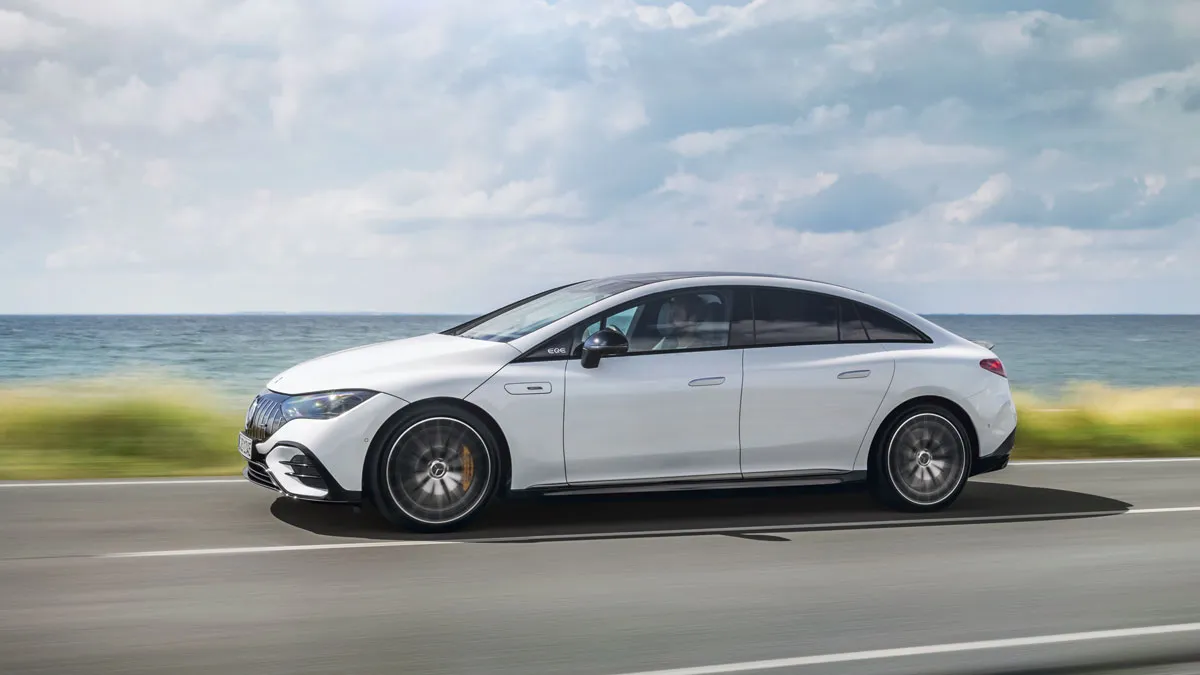
Mercedes-Benz’s top-of-the-line EQS launched the legacy automaker’s entrance into the mainstream EV market, but the smaller EQE outsprints the big-bodied sedan with a claimed zero-to-100 km/h time of 3.2 seconds. The AMG package also bisects the bubble-shaped four-door’s ovoid figure with flares, spoilers, and other visual signifiers that give the 677 hp sedan a more aggressive look than its EQS sibling.
GMC Hummer EV Pickup Truck
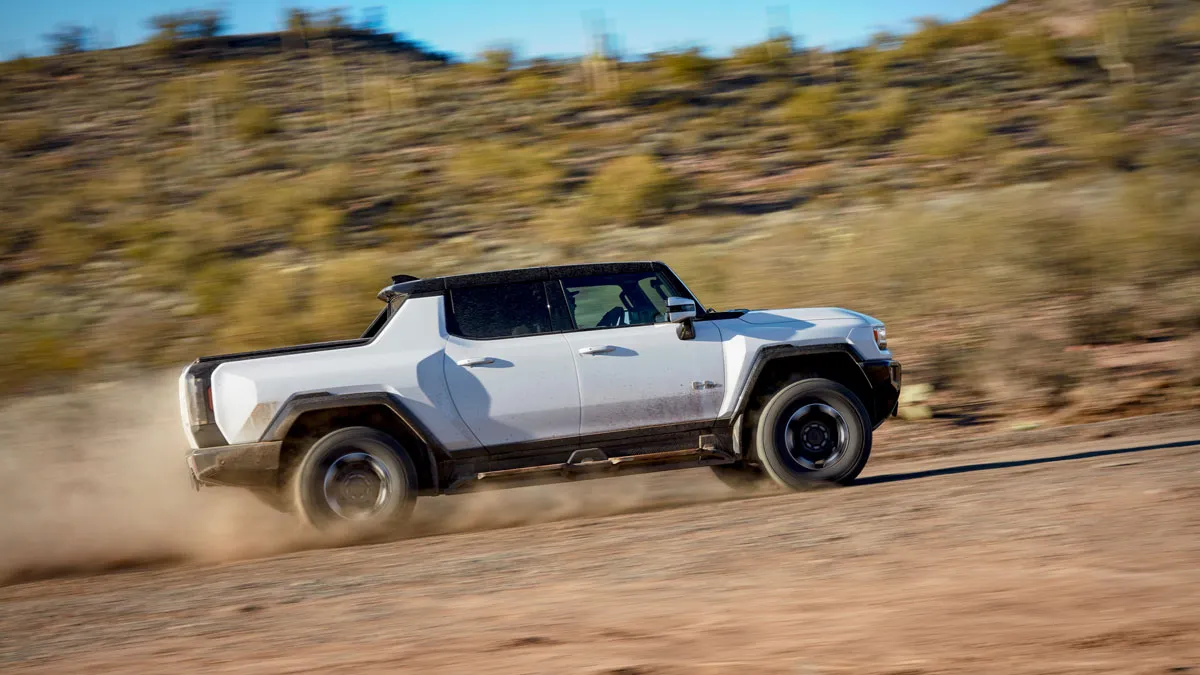
The General Motors Hummer EV was conceived with a more-is-more approach to engineering. While many manufacturers seek to optimise efficiency through lightweight construction and slippery aerodynamics, the Hummer EV Pickup Truck tips the scales at over 4,000 kg, a relatively astounding heft that is defied by a touted zero-to-100 km/h time of around 3 seconds. All that mass is overcome by 1,000 hp routed through three motors, offering a maximalist answer to the pickup-truck question nobody asked.
Lotus Evija
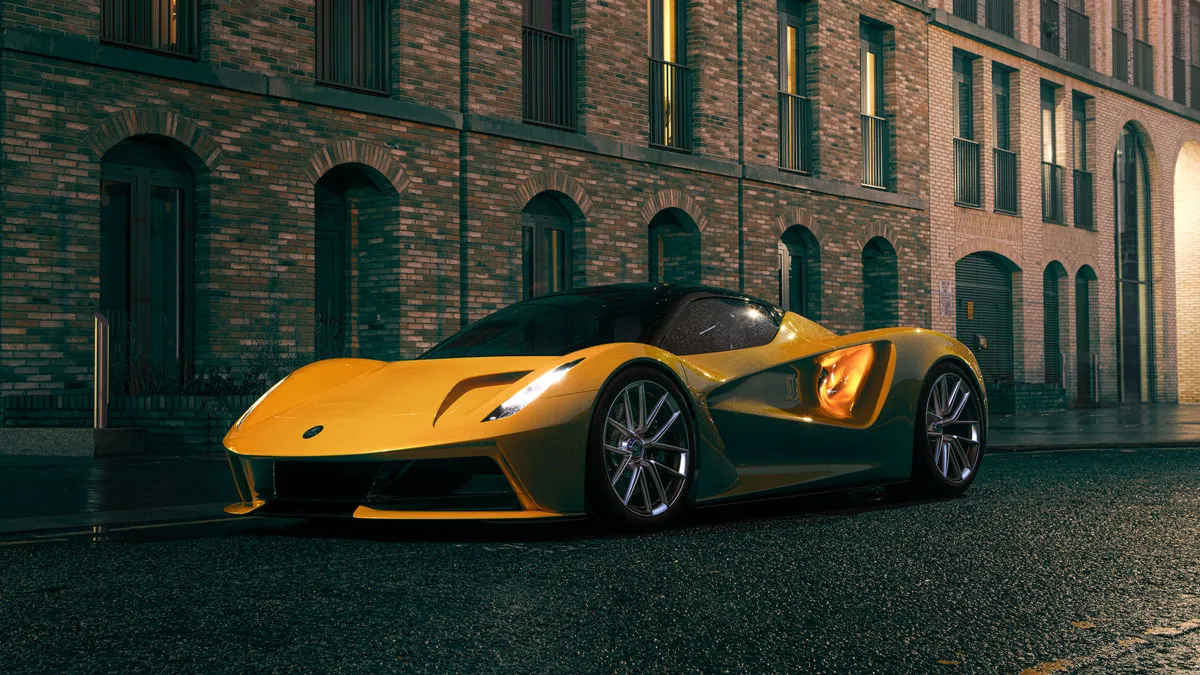
While the Evija hypercar from Lotus has yet to reach customer garages, the sold-out flagship is designed with a focus on weight reduction. The $2.3 million two-seater weighs around 1,600 kg, embracing Lotus founder Colin Chapman’s famous maxim to “add lightness.” Lotus also added more than a bit of muscle, with 2,000 hp launching the vehicle from zero to 100 km/h in less than 3.0 seconds. More impressive, the Evija is expected to reach 300 km/h in 9 seconds and have a top speed beyond 200 km/h.
Xiaomi SU7 Ultra
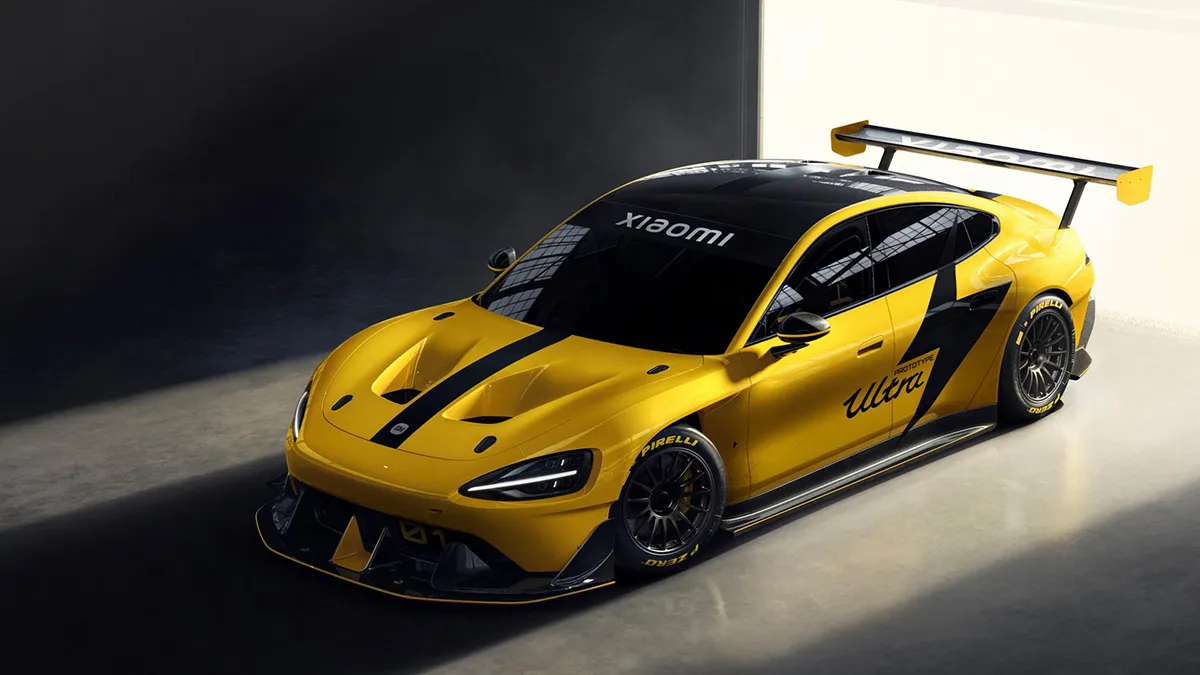
It’s been clear since Xiaomi SU7 was first unveiled earlier this spring that the Chinese electronics giant had its eye on the Porsche Taycan. The company’s debut EV is a sporty sedan with a body that, to put it charitably, looks quite similar to that of the German’s first battery-powered model. But the SU7 isn’t content to just look like the Taycan—specifically the Turbo GT model that circled the Nürburgring Nordschleife in 7:07.55—it wants to move like it too. Enter its high-performance variant, the Ultra, which features a tri-motor powertrain that can produce 1,517 hp. Thanks to all that, the EV will be able to sprint from zero to 100 km/h in 2.8 seconds and hit a top speed of 350 km/h when it eventually goes on sale.
Maserati GranCabrio Folgore
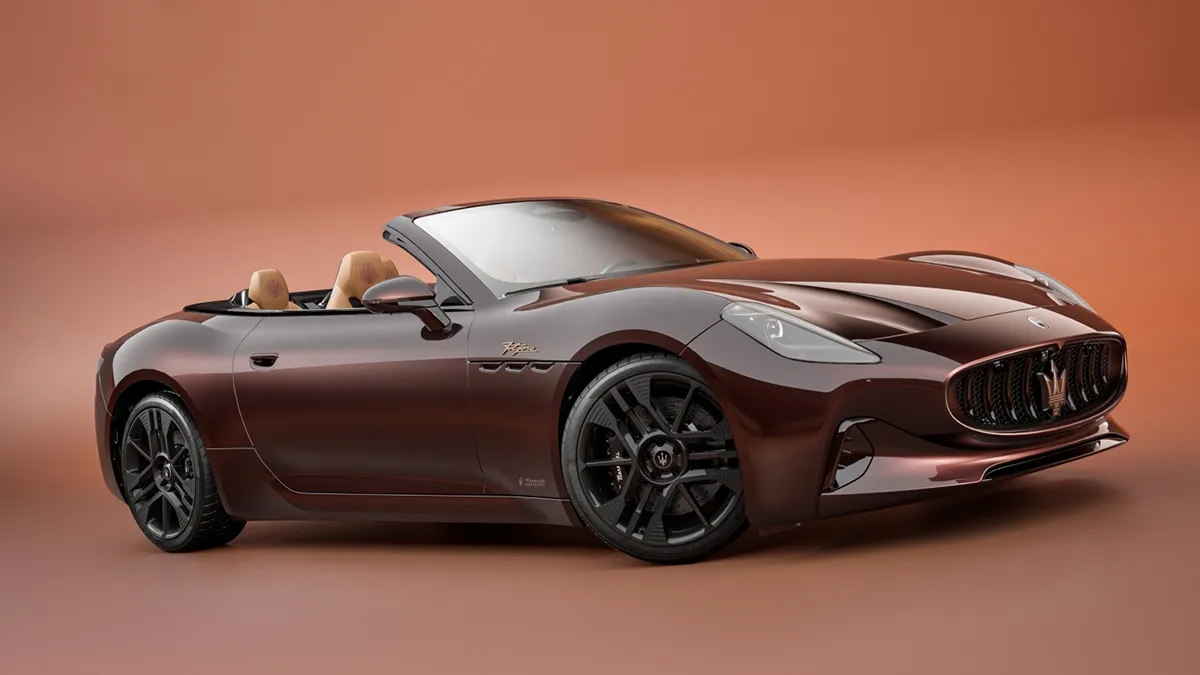
We may still be waiting on the first battery-powered model from Ferrari and Lamborghini, but Maserati has already gone all-electric and the results are impressive to say the least. The marque has a whole line of EVs called Folgore, which includes a coupe (the GranTurismo), a convertible (the GranCabrio), and an SUV (the Grecale). The first two, the GranCabrio is based on the GranTurismo, have a tri-motor powertrain that generates 818 hp, significantly more powerful than the most portent version of their gas-powered counterparts. With all that power under the metaphorical hood, it’s little surprise that the electric GranTurismo can hit 100 km/h in 2.7 second and reach a top speed of 325 km/h.
Nio EP9

The Chinese brand Nio launched its product lineup with the EP9 hypercar in 2016, entering the market with a halo vehicle whose appeal was intended to trickle down to more workaday sedans, SUVs, and wagons. While the EP9’s 1,341 hp, $5.2 million price tag, and rate of acceleration from zero to 100 km/h in 2.6-seconds are all eye-catching figures, the brand’s struggles are perhaps more intriguing.
The company has been pedaling hard to stay afloat, with a $1.4 billion government bailout, ongoing losses, and a still-faltering stock price. Nio’s intention to become the next Tesla was certainly ambitious, but the current challenge is to build affordable cars that produce ludicrous sales figures, not performance numbers.
Audi RS e-tron GT Performance
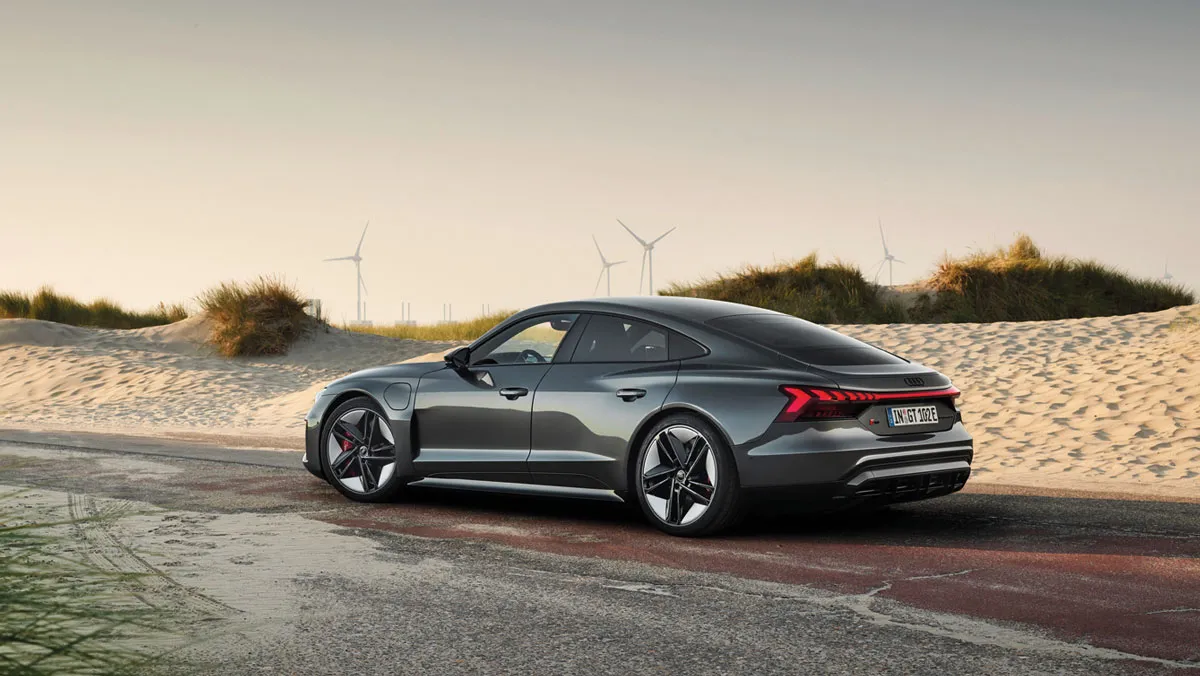
Like the Porsche Taycan with which it shares a platform, Audi’s RS e-tron GT incorporates a two-speed transmission that helps boost acceleration and improve efficiency at highway speeds. The just-introduced range-topper, the RS e-tron GT Performance, has a dual-motor powertrain that delivers a startling 912 hp, making it the marque’s most powerful production car ever. Thanks to the added power it can leap to 100 km/h in an easy-to-miss 2.5 seconds on its way to an electronically limited top speed of 250 km/h. Though not as uncorked as its sister car from Porsche, this new variant raises the bar for the brand’s sports sedans.
Rivian R1T and R1S Quad-Motor
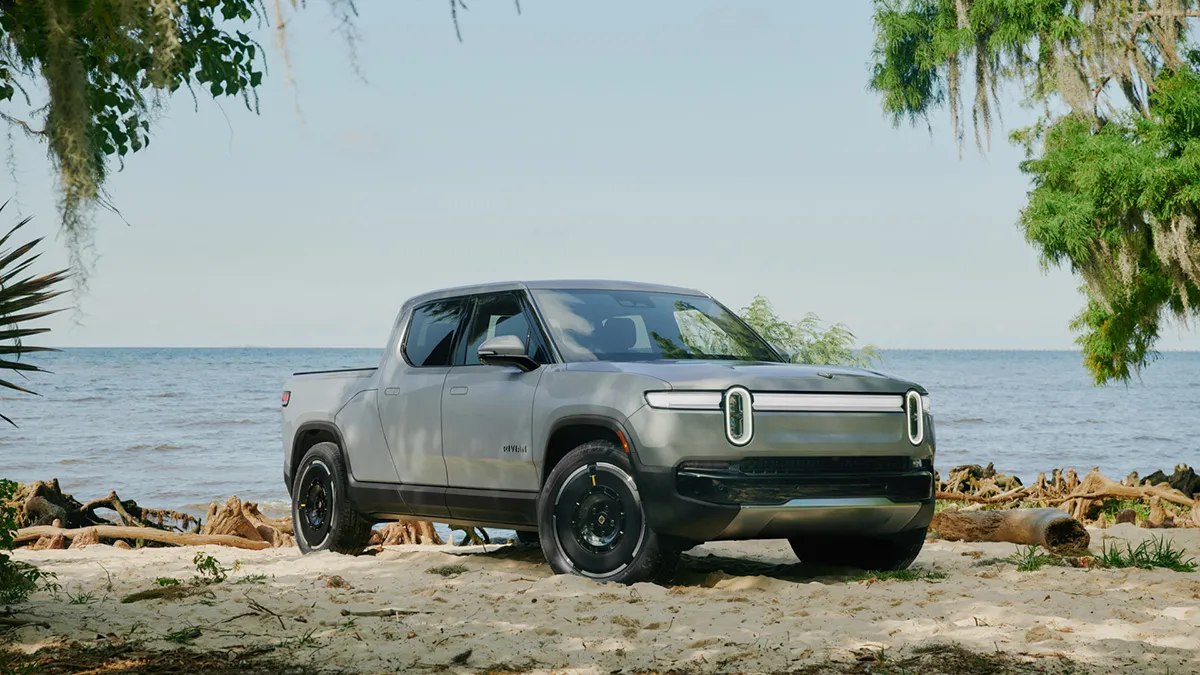
The most richly funded automotive startup in history might have had a few sales stumbles and hurdles to profitability, but Rivian has had no problem building surprisingly sprightly trucks and SUVs. The upgraded quad-motor powertrain found in the 2025 R1T and R1S delivers 850 hp and 1,500 Nm of torque, the battery-powered pickup can reach 100 km/h from a standstill in 2.5 seconds flat. Also noteworthy is its torque-vectoring capability, which aids its handling and off-road acumen. And the automaker’s recently unveiled R2 and R3 midsize may be even quicker, but we’ll have to wait for verification.
Porsche Taycan Turbo GT
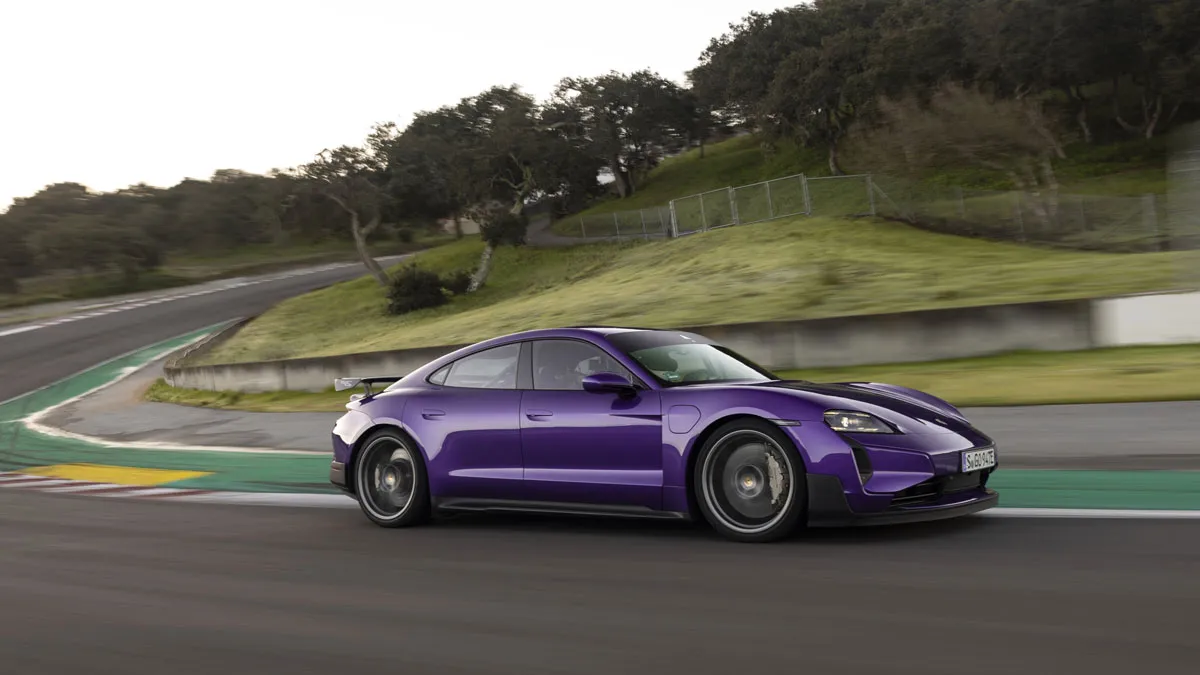
In order to compete with Tesla’s hot-rodded Model S Plaid and the contending Lucid Air Sapphire, Porsche upped the output of its flagship electric sedan’s four motors. Notably, it also took the drastic measure of removing the rear seats, thereby making this Taycan variant a 1,092 hp two-seat four-door.
The track-focused model’s zeo-to-100 km/h time of 2.2 seconds may not be the quickest, but its record-breaking lap times at the Nürburgring Nordschleife and WeatherTech Raceway Laguna Seca racetracks prove the Taycan’s mettle where it matters most to the German brand.
BYD Yangwang U9

BYD has been creating buzz for approaching numbers that threaten Tesla’s global sales crown. The Chinese multinational conglomerate was edged out by Elon’s brand for the first quarter of 2024, but the challenger gained an edge with its curiously named Yangwang U9. Unlike most EV hypercars with four-digit horsepower figures and seven-digit price tags, BYD’s 1,287 hp flagship comes in at $345,000. And that’s for a car that can still scoot to 100 km/h in 2.0 seconds flat. There’s a slight chance it could be even quicker too, since the sports car’s top speed of 375 km/h—high enough to make it the world’s third fastest EV—is actually faster than originally promised.
Tesla Model S Plaid
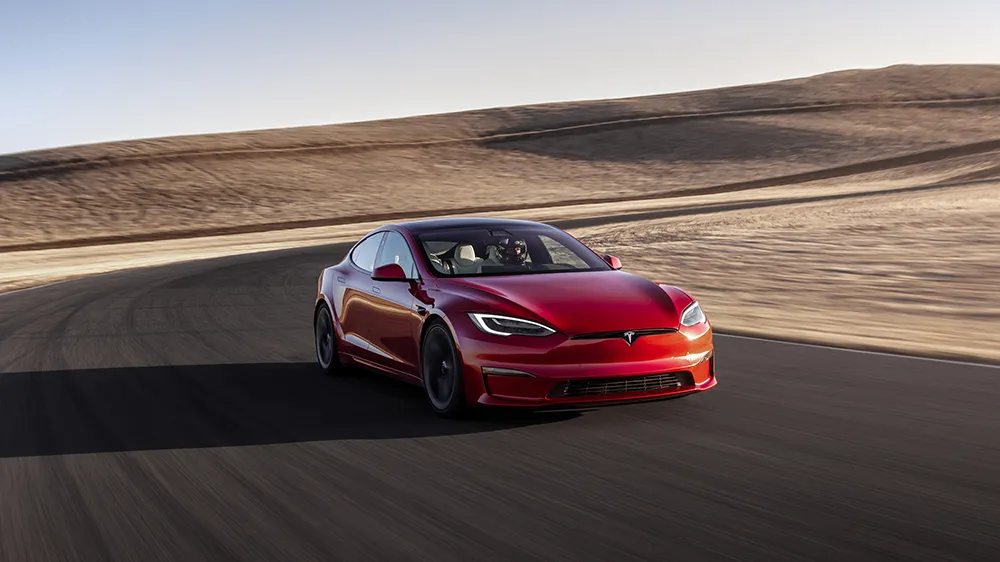
The Tesla Model S is the car that cleared the way for every other car on this list. More than a decade later, the sedan is still going, even if its dated design has seen better days. Despite its age, the Model S, and especially the high-performance Plaid variant, can more than hold its own. The range-topping four-door has a tri-motor powertrain that produces 1,020 hp and 1,400 Nm of torque, making it even more powerful than the Cybertruck Beast variant. Thanks to all that grunt, the car can shoot from zero to 100 km/h in 1.99 seconds and hit a top speed of 321 km/h (with the right tires).
Lucid Air Sapphire
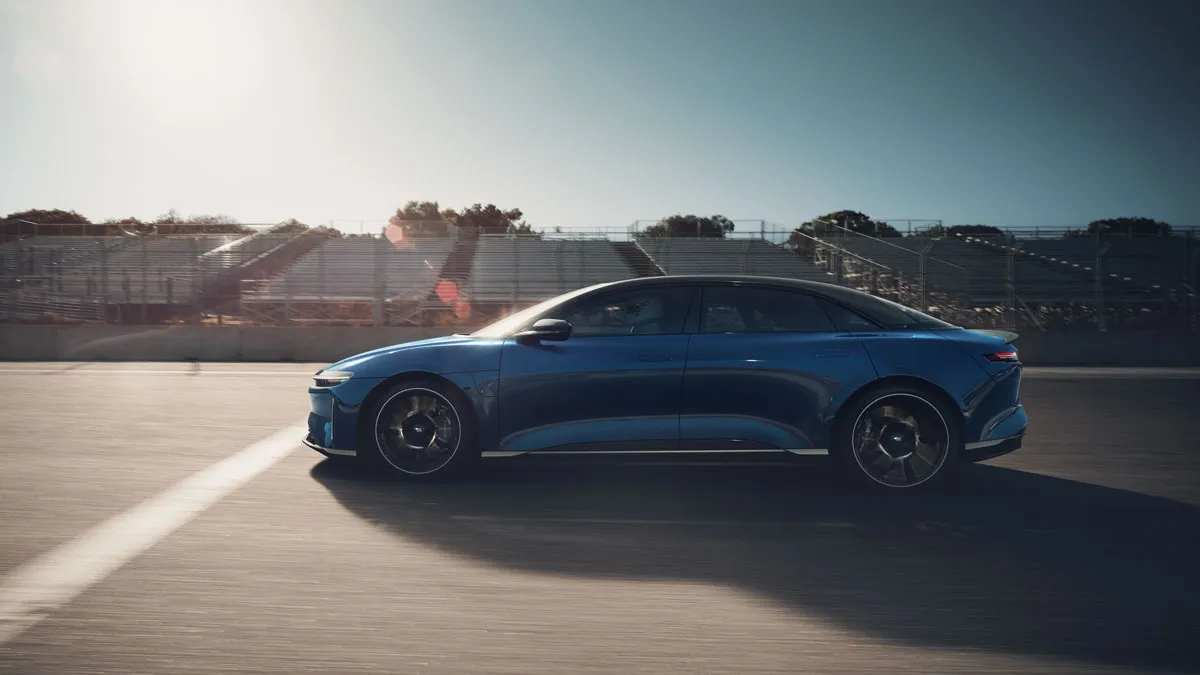
Lucid’s Air Dream Edition debuted in 2021 with 1,111 hp, disrupting the miniscule EV sedan space with a disarmingly potent offering. The marque’s recently released Sapphire ups the ante when it comes to acceleration, with a claimed zero-to-100 km/h time of 1.89 seconds.
The urgency comes from three motors producing 1,234 hp. That output is routed through all four wheels via a torque-vectoring system that helps the hefty sedan rotate through corners. The EPA estimated range of the five-passenger Sapphire is 687 km.
Pininfarina Battista

If the buttoned-down styling of the Rimac Nevera doesn’t do it for you, you might consider the similarly powerful but more fancifully styled Pininfarina Battista. The Italianate take on the Croatian hypercar claims similarly outrageous numbers—1,900 hp hailing from four electric motors. The zero-emissions power train enables the car to rocket from zero to 100 km/h in 1.86 seconds.
However, key differentiators between the Rimac Nevera and the Pininfarina Battista are the latter’s Luca Borgogno–designed carbon-fibre body—defined by complex curves—and the imaginatively trimmed cabin. The Battista tops out at 350 km/h, though, so it’s not as fast as the Nevera.
Rimac Nevera Time Attack

The Rimac Nevera Time Attack’s 1,813 hp motors can whisk the Croatian-built two-seater to 100 km/h from a standstill in 1.81 seconds. Perhaps more impressive is that it can reach its top speed of 416 km/h and then slow to a stop in a faster total time than it takes a McLaren F1 to reach 350 km/h.
Rimac isn’t betting entirely on electric, however. The brand’s acquisition of the Bugatti nameplate will lead to a hybridised V-16 power plant producing the best of both worlds: the charisma of an old school internal-combustion engine and the efficient speed of battery-assisted torque.
Aspark Owl
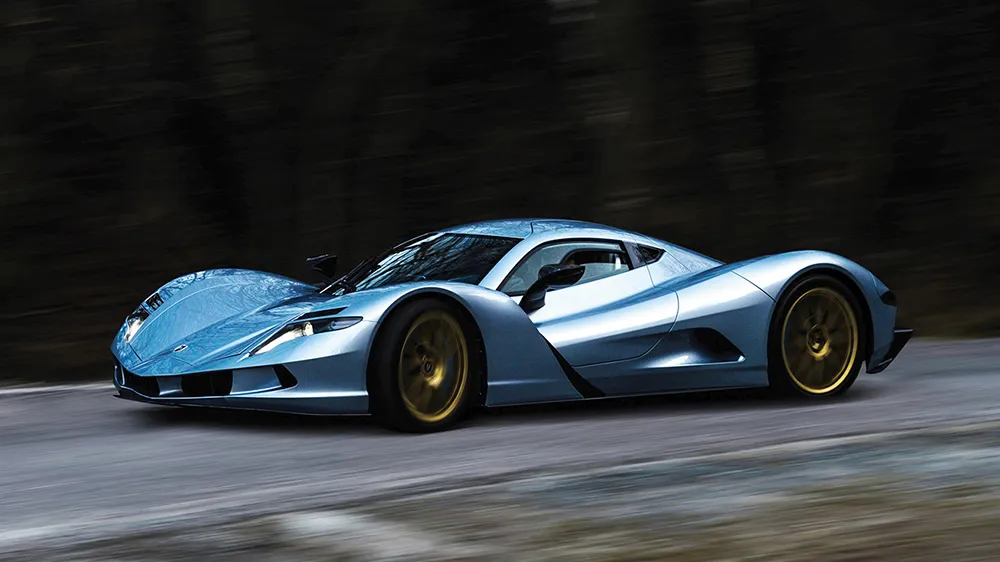
The long-delayed Aspark Owl is a Japanese hypercar aiming for a host of all-electric superlatives: the most powerful electric motors (1,980 hp), the quickest EV (zero to 100 km/h in 1.72 seconds), and the fastest as well (418 km/h). Aspark also promises a version bodied in carbon fibre that starts at $5.6 million.
The Owl has been responsible for two Guinness World Records (for eight-mile and quarter-mile average speeds) but shifting production from Italy back to Japan has produced even more delays, requiring patience from would-be owners.
You may also like.
Back in the Race
You can’t replicate provenance. But attitude? That’s another story.
With the effect of seeing a grainy cinematic reel enhanced to high-def, the Cegga 002/60 roars into view, in living colour, on a country road just outside London. The car is a tribute to a Ferrari 250 Testa Rossa that lived a most improbable life: raced, wrecked, then rebuilt and significantly customised, it went on to enjoy notable success on the European racing circuit during the golden age of motorsport—only to be sold and reverted to standard spec some seven years later.
A brief timeline, for clarity: In 1958, on the Freiburg-Schauinsland hill climb in Germany, owner Alfred Hopf lost control of his 250 Testa Rossa and ended up deep in the trees of the Black Forest. The following year, the wreckage was bought by brothers Claude and Georges Gachnang of Aigle, Switzerland, who despite their country’s ban on motorsport at the time, were determined to race. Claude, a gifted mechanic, redesigned the suspension to sharpen the car’s handling, then commissioned Italian coachbuilder Carrozzeria Scaglietti to wrap the tubular steel chassis in a distinct hand-beaten-aluminium body. (The pert tail, for example, owes much to British sports cars of the era.)
The vehicle, christened Cegga 002/60, went on to win numerous European hill climbs in the early 1960s under the banner of Scuderia Cegga—an acronym of Claude et Georges Gachnang Aigle—and appeared on the starting grid at the Four Hours of Pescara and the Nürburgring 1000 km.
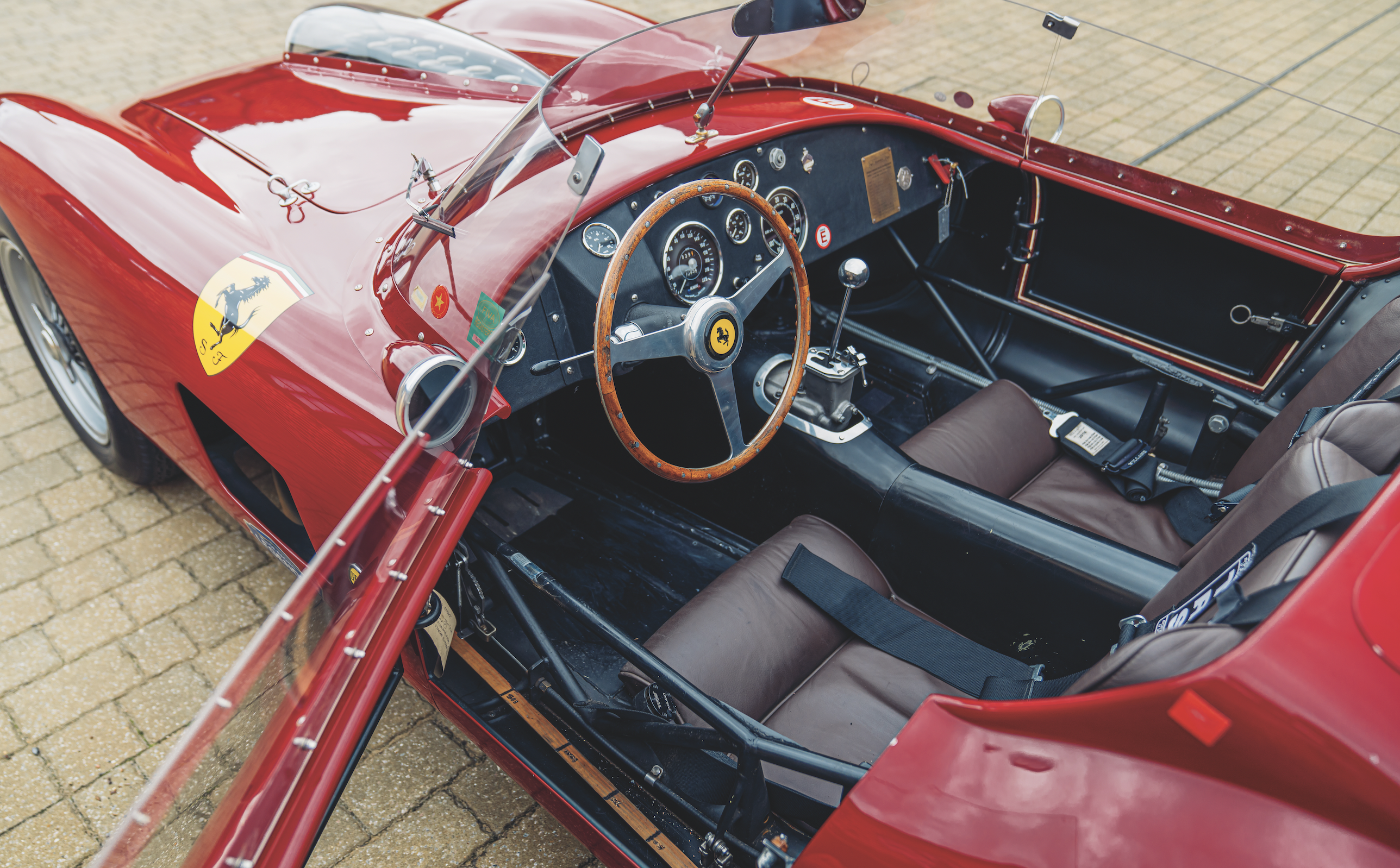
But after an accident in 1966, Georges retired from competition and the car was sold to a Ferrari collector who immediately converted it back to stock. Scuderia Cegga and its uniquely styled roadster might have been forgotten entirely if it wasn’t for former English rugby star (and avid historics racer) David Cooke.
In 2016, Cooke, having read about the Gachnangs and their cars, tracked down the brothers, then in their 80s, who shared their trove of technical drawings and period photos of the 002/60. Using a Ferrari 250 GT Boano chassis and a period-correct 3.0-litre Colombo V-12, classics expert Neil Twyman recreated the machine with inboard disc brakes, an ENV differential and independent rear suspension (instead of a beam axle) to match the original Cegga geometry.
The process took four years, with the brothers regularly flying over from Switzerland to provide hands-on advice. In 2019, Cooke raced the Cegga doppelgänger at the Goodwood Revival as a tearful Georges watched, and the replica went on to become a regular sight at historic events.
When in motion, the 002/60 turns more heads than any 21st-century hypercar. Exhaling through twin side pipes, its unsilenced V-12 is brutally loud—any attempt at conversation inside the cockpit is useless—but the modified chassis imbues the drive dynamics with a surprising level of sophistication; with its tactile steering and muscular manual shift, the racer demands, and rewards, every ounce of attention. With the help of UK-based Ferrari restoration house DK Engineering and the Carhuna online auction platform, the Cegga recently sold for nearly US$865,000 (around $1.3m)—a reminder that, with the right build team in your corner, authenticity is sometimes more a matter of attitude than pure provenance. Tim Pitt
Expanding on a motorsport footnote, this meticulous copy of the Cegga 002/60— built on a Ferrari 250 GT Boano chassis— recently fetched nearly US$865,000 at auction.
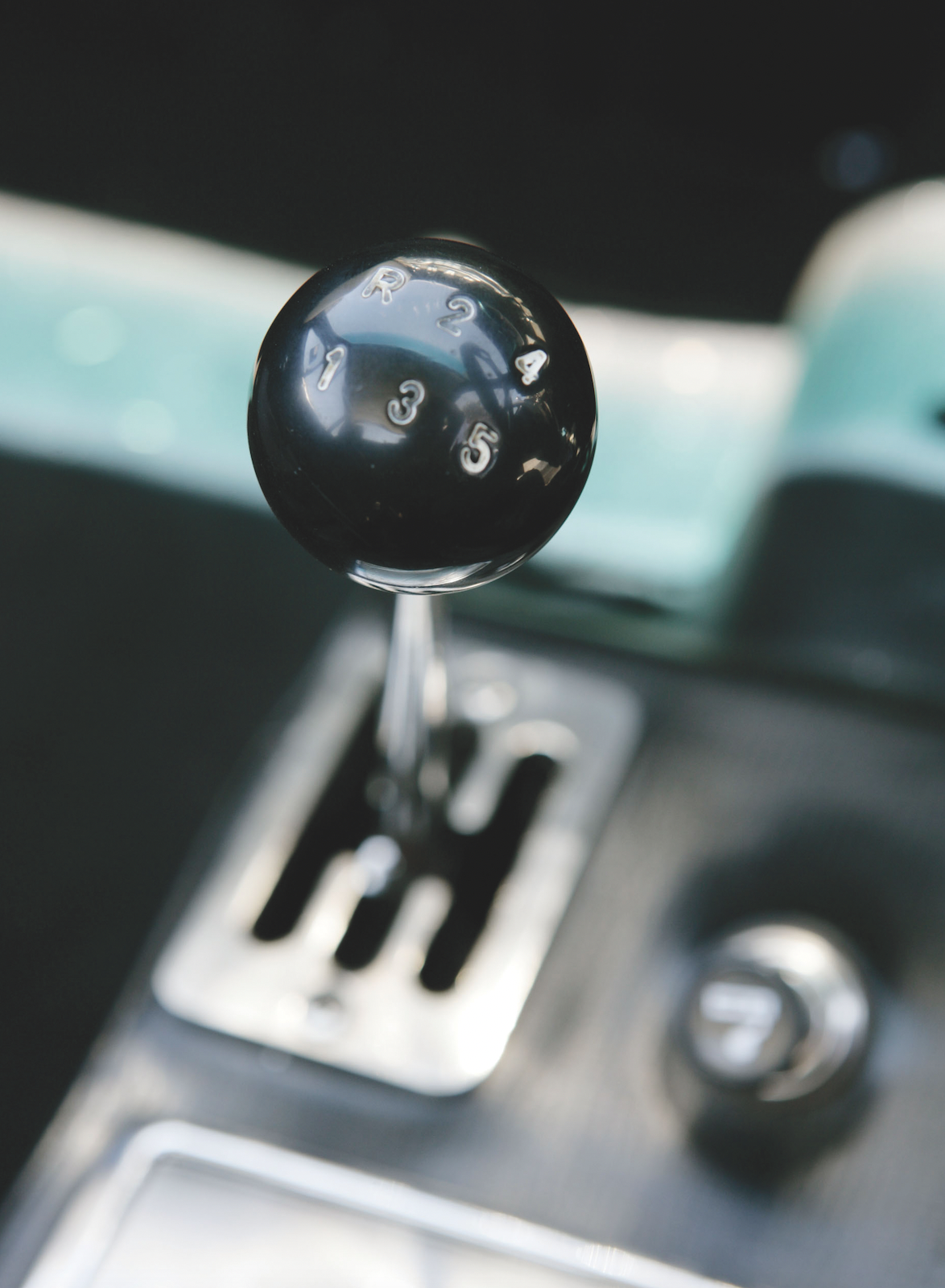
Studying the Classics
Pretty much all luxury automakers offer track experiences bundled with their latest performance cars, but Ferrari’s Corso Pilota Classiche program instructs owners on how to get the most out of older Prancing Horse breeds. Here are a few tips we picked up around the track. Basem Wasef
• Get Your Mind Right
Classic Ferraris may have looked fast on your childhood poster, but their pace pales in comparison to modern cars. (It sounds obvious, but you’d be surprised by how many people want to hammer their 250 GT like an 812 Superfast.) Vintage exotics require patience when shifting, cornering and stopping; learning to heel-and-toe will improve the car’s rear-end stability under simultaneous braking and downshifting while matching engine revs between gears—and since a little mechanical sympathy goes a long way, the ability to double-clutch is another key skill when dealing with older unsynchronised manual transmissions.
• Love What Makes Your Steed Unique
Vintage machines are engineered with far more variability than mass-produced late-model cars, which means that not only are their driving characteristics quirkier and harder to predict, but two seemingly identical examples can drive differently thanks to manufacturing variances or vagaries in alignment and tuning. And be sure to take the time to understand how to work with your vehicle’s weight distribution: a mid-engined 1989 Ferrari Testarossa, with 60 percent of its weight at the back, will be more apt to spin than a front-engined 1969 Ferrari 365 GTB/4 with 50:50 dispersal. Only by modifying your tactics to work around your car’s distinct characteristics will you learn to bring it to a full gallop.
• Live (and Listen) on the Edge
From slower-revving engines to taller tyre sidewalls, older exotics offer narrower performance envelopes, but ones that are more easily explored than in contemporary supercars. As you approach your vehicle’s limits, you’ll find a world of feedback and communication, from chattering tyres to a dancing steering wheel, and much of the joy of piloting a classic at speed is learning to tune into that symphony of sounds and sensations. Plus, it might save your bacon—as one Corso Pilota Classiche instructor put it, “The only thing that will protect you from your mistakes is your bond with the car.” These machines mostly lack the electronic aids that today’s drivers take for granted—push too hard or ignore what the car is trying to tell you, and you’re flirting with an extremely expensive repair bill (at best).
• Learn How to Stable Properly
Classic exotics aren’t built as robustly as their modern counterparts; from cooling systems to braking capabilities, technology has come a long way since the days of carburetors and crash boxes. Vital fluids, such as those for the clutch and brake as well as the manual-gearbox oil, should be replaced every 15,000 to 25,000 km. When storing an older car for a long stretch, keep the gas tank filled to minimise water build-up but add a stabiliser to prevent fuel breakdown.
• Exercise Frequently
Yes, they’re finicky and relatively fragile, but remember: these machines were built to be driven. Don’t be afraid to take yours out and give the speedometer a twirl. It’s actually the best way to ensure greater reliability in the long run—not to mention the most fun.
You may also like.
Vintage Piaget Watches Have Never Been More Collectible. Here’s What You Need to Know.
Piaget watches are some of the most important and interesting horological accomplishments of the 20th century, yet they remain a bit confounding to collectors.
To get a better sense of how to start going about collecting vintage Piaget watches, Robb Report’s watch and jewellery editor, Paige Reddinger, and I sat down with vintage watch expert James Lamdin of Analog:Shift. Analog:Shift has an impressive Piaget selection on offer, and those are the watches we photographed and include here. We also spoke with watch experts Eric Wind of Wind Vintageand Gai Gohari of Classic Watch Inc., both of whom offered their insights into vintage Piaget.
Piaget and the Small Watch Moment
Last year, just months before Piaget stirred up an enormous buzz by bringing back the Polo 79, I was eating lunch in Manhattan with a savvy, well-regarded watch collector who told me they were, “going after a lot of Piaget at auction.” As this collector began to rattle off this and that Piaget watch as “a milestone in thin watches” or “housing one of the most important movements of the 20th century,” it became clear that vintage Piaget watches were both rich in horological history and undervalued. That’s a killer combo for collectability.
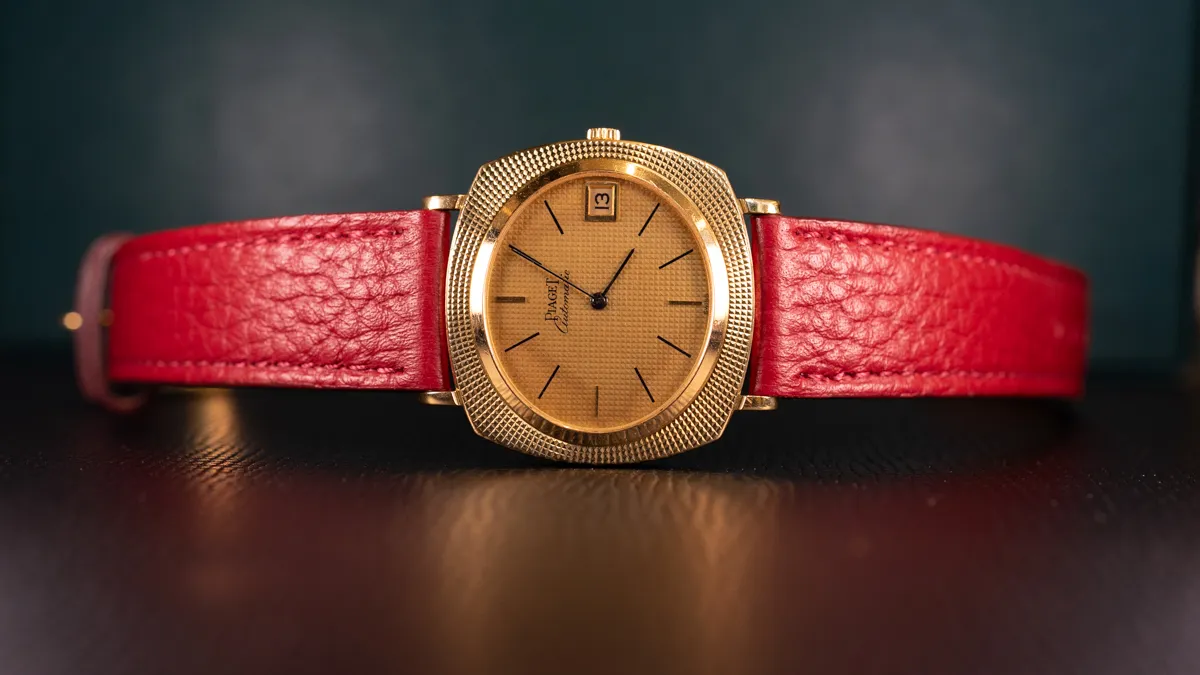
Not long after that lunch, Piaget dropped the Polo 79, Usher started rocking tiny gold Piaget watches at big events, and everyone and their watch-loving cousin seemed to be talking about small dress watches with stone dials, which were often Piagets. Reddinger wrote an article about Piaget having a moment, and Robb Report has also noted the trend toward smaller, dressier watches, especially Cartier, and especially its tiny Tank Mini.
“Piaget as a brand is having a moment, but Piaget as an idea is having a huge moment,” Lamdin told Robb Report. “It’s on everyone’s lips. It’s on every collector’s lips, it’s on every new brand’s lips, it’s on every micro brand’s lips. They’re all talking about the influence that Piaget has as a sort of style icon.”
Eric Wind told us that, “Piaget watches still offer a tremendous value compared to their new counterparts.” And Wind’s colleague Charlie Dunn has written of Piaget that, “…the same dress watches from Cartier, Patek Philippe, and Audemars Piguet command two to three times more at least compared to Piaget.”
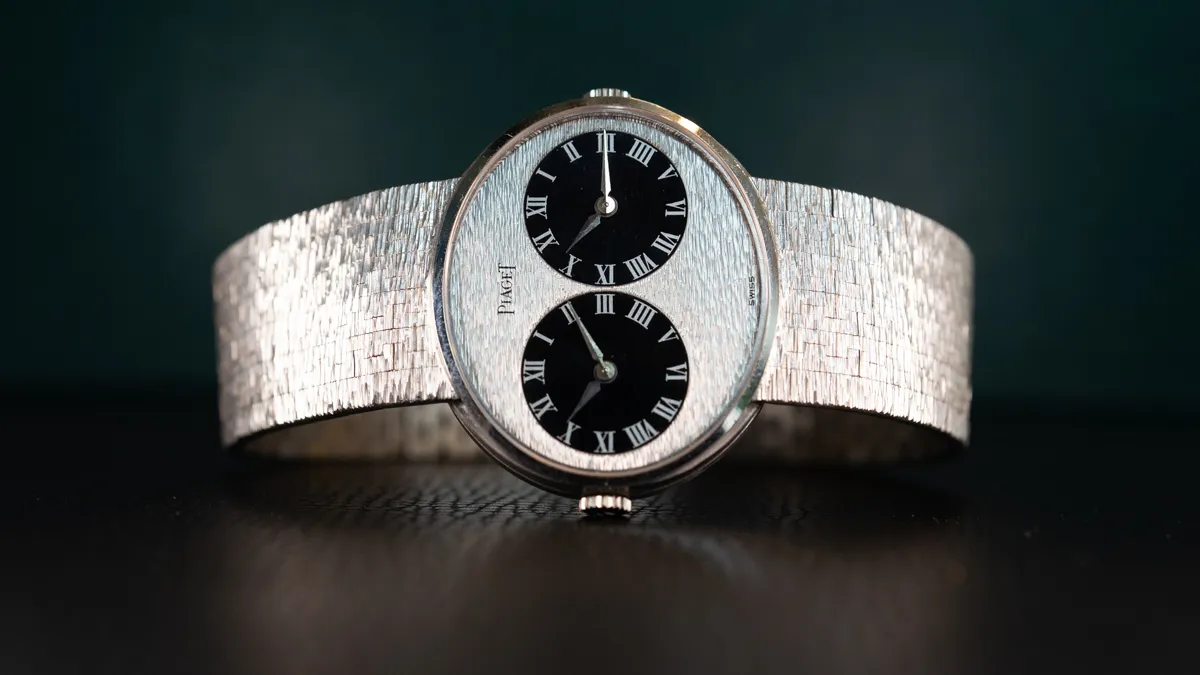
Because watch collecting trends are largely driven by the tastes of men, it’s intriguing that these tiny, jewellery-oriented watches are blowing up. Lamdin told us, “I didn’t expect for men to embrace it the way [they have], which has been really interesting. We had this guy come in last week [and] he was . . . like a six-foot-five, six-foot-six kind of guy. He was tall and built, and he had a very petite partner, and they had a bunch of watches out…and there were some big watches, and there were some Piagets. And I made an assumption there: His and hers. I was wrong. He came back two days later and bought the small lapis Piaget for himself. Awesome. I was like, fuck yeah.”
Given our recent take on watches, fashion, and gender, we happily cheer along with Lamdin here. However, why these small watches are having a moment remains a cultural question without obvious or clear answers.
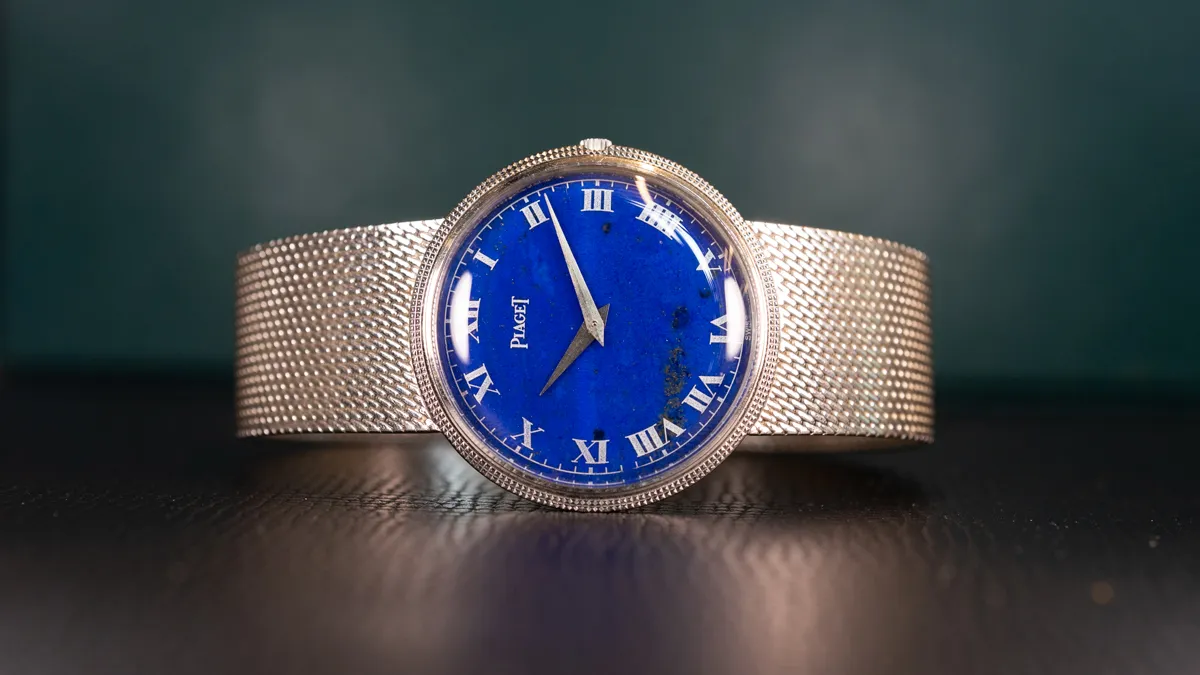
Piaget Are Design-Forward Watches
When we asked Lamdin why Piaget was having a moment, he echoed some of what we proffered in our own take on shifting horological tastes, as well as men embracing traditionally feminine things like grooming and fashion more generally. In our conversation I noted that there’s a feminine moment going on, evidenced by trends such as pendant necklaces and broaches for men, pink clothing, smaller watches, and that this tendency may have helped Piaget become popular.
Lamdin agreed, but then also told us, “For 35 years the entire collector community has been obsessed with tool watches, the idea of a function-forward instrument, which, generally in our world, comes in the form of a 40-millimeter steel diver or chronograph timing device with some sort of historical romanticism behind it, whether it’s diving or flying or space travel or something adjacent. And the thing about horology is it doesn’t have to just be function-forward.”
Lamdin goes on to note that design-forward watches can lean in many niche directions, such as exploring asymmetry and unique materials, even noting that watches don’t need to be functional beyond telling time, which opens up the platform for artistic expression. “I think when you sort of turn the corner on that idea as a collector or as an enthusiast, the world kind of balloons out, and now, all of a sudden, things you never would have considered are captivating,” Lamdin explained.

Reddinger asked Lamdin, “Why do you think suddenly the watch community—which has traditionally been so into movements and tool watches, or had to go long and deep on the escapement on this Patek Philippe—why are they suddenly embracing design?”
Lamdin replied, “We probably do need to mention Covid, right? And Covid was an interesting time for watches in general. And I think people got bored with the same shit because they weren’t just casually reading the blogs on their lunch breaks. They were consuming it for hours and hours and hours every day. And they learned a lot. People got burned out of the same stuff that they were getting fed over and over.” He goes on to note that small dress watches eventually caught fire on social media, and mentions what he called “the Portalnd Oregan effect,” in which “we’re going to try and out-weird one another.”
Gohari told Robb Report, “I think Piaget is having a renaissance right now because we just came out of 10 years of sheep-like vintage watch collecting where everyone wanted the same and most popular steel Rolex or Patek Philippe sports models driving up the prices to absurd like levels. Piaget is the antithesis to that mind set.”
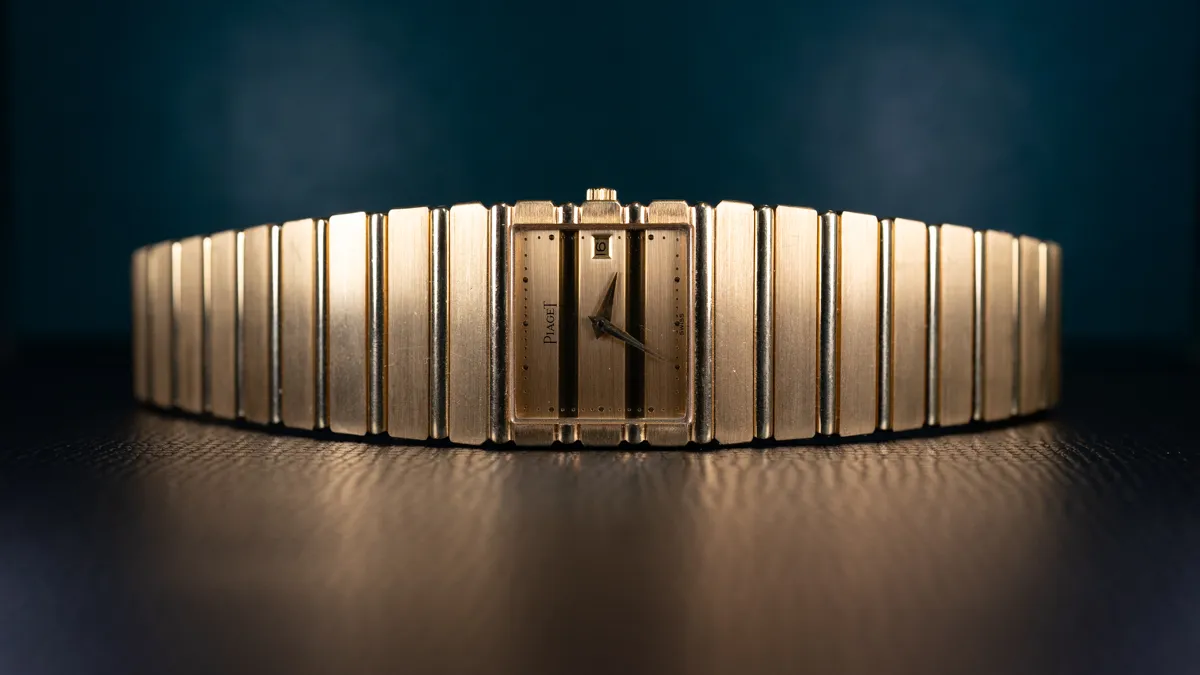
By now, however, Piaget watches aren’t looking quite as weird as they did during the initial wave of revival, which happens naturally as the culture acclimates to the new normal. Piaget is undeniably “in,” so how do we even approach collecting these fascinating little watches?
How to Approach Collecting Piaget Watches
While all this buzz about Piaget watches continues, and prices keep crawling upward (despite the downward trend of the watch market generally), there is a notable dearth of information about vintage Piaget watches. One of the reasons is that, like Vacheron Constantin, Piaget didn’t have a singular hit watch during the 20th century. Brands like Vacheron Constantin and Piaget riffed endlessly on designs, often making just a few of a single iteration and distributing them widely, presumably so that one would not see the same watch where they lived.
Today, the effect of that strategy is that the variety of Piaget watches on offer is somewhat overwhelming. Unlike collecting Rolex or Omega, for example, where one can pick up one of millions of the same mass-produced watch and confidently notch their belt, collecting Piaget requires a keener sense of taste and discretion. The upside is that Piaget collections will pretty much never resemble each other, but the lack of a set formula for building a collection remains a challenge.
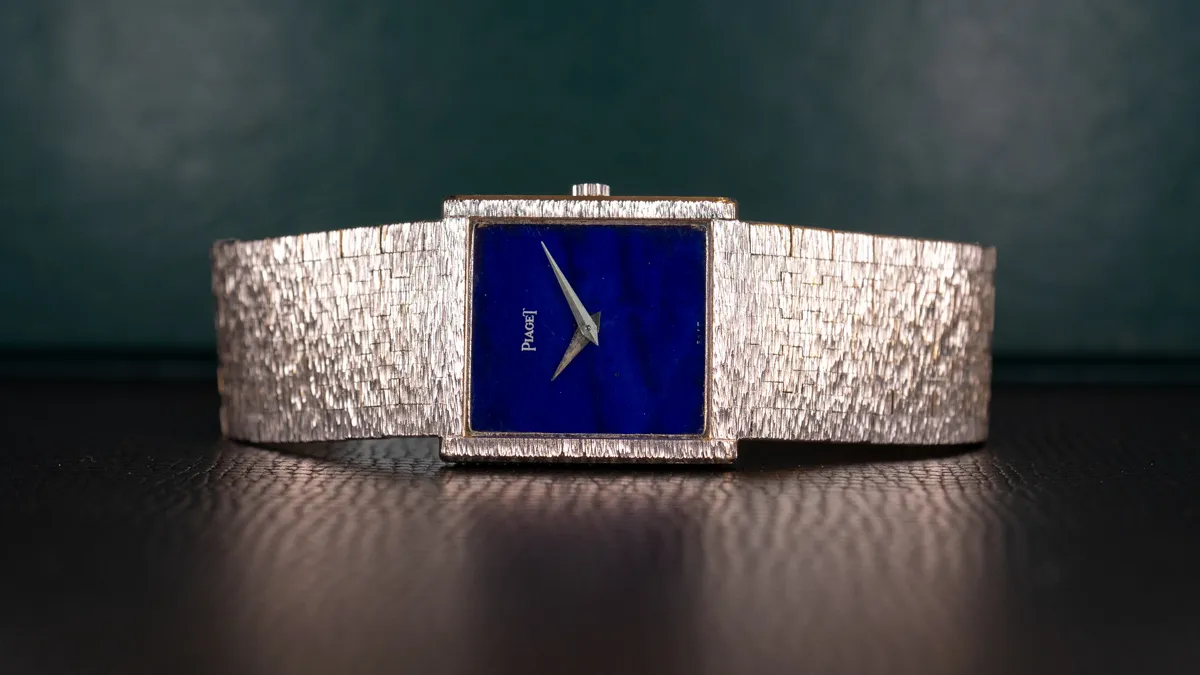
We asked Lamdin for advice he’d give to somebody looking to move into Piaget collecting for the first time. Lamdin said, “Probably the same advice I’d give for anything else, which is make sure you’re buying from a trusted source. It’s not uncommon to see refinished dials or replacement dials. It’s not uncommon to get sold a bill of goods on a watch without a functioning mechanism. You know, servicing a [ultra-thin] calibre 9P is not the easiest thing in the world. It’s a very, very small movement. It’s very easy to lose or destroy screws when you’re opening those case backs and the quartz stuff is tricky as well, not always just a battery. You have to rebuild a heat-sink or something, and then you’re in it for three times what you paid for the watch.”
The 9P was the movement around which Piaget first produced its own watches in 1957, seeing off a craze for ultra-thin watches. The 9P was just two mm tall and continues to be regarded by watch collectors with awe.
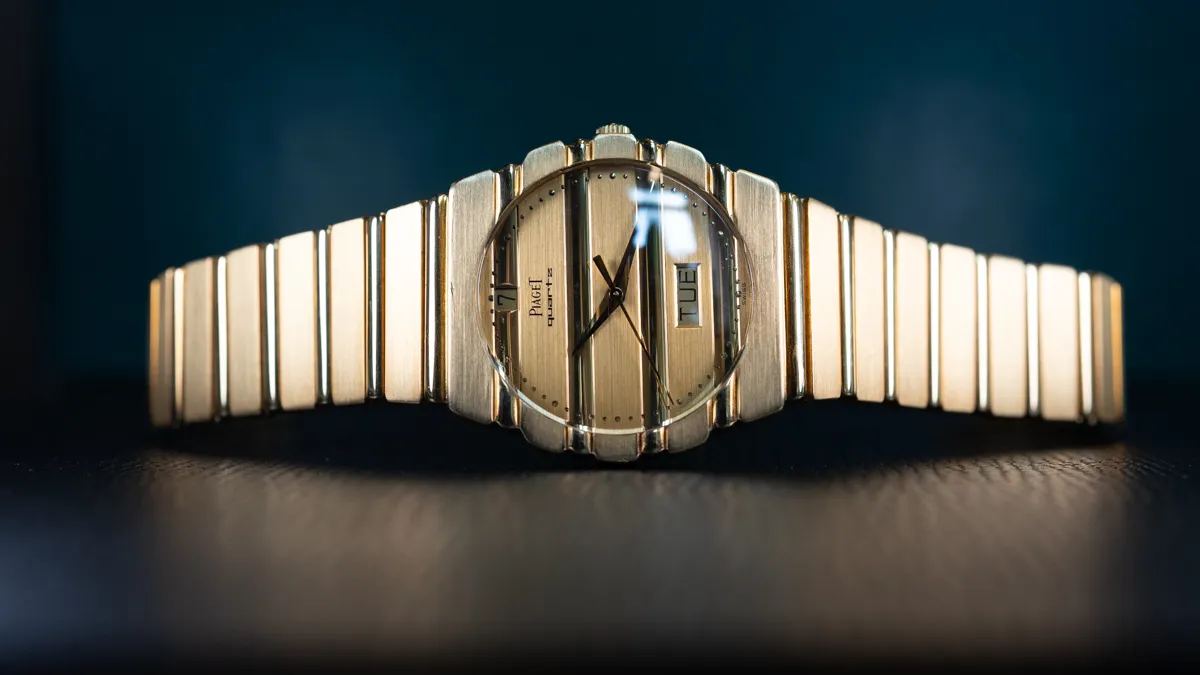
When we asked Lamdin about certain models that he felt were good to collect, he said, “I personally find myself drawn to anything with the [ultra-thin] 9P [movement], or one of its variants. They made them for ladies. They made them for men. They made them with articulated or woven gold bracelets. They made them on leather straps.”
Gohari, an avid collector of Piaget pointed to some specific references. “Vintage Piaget mostly brings to mind the iconic 18k bracelet Polo model in all its iterations—an unbeatable value for the gold weight and a true pleasure to wear on the wrist—along with the unsurpassed use of stone dials on their dress pieces such as on the classic “Protocole” references (rectangular case on leather strap).”
Gohari goes on to mention the Beta 21 references, which feel “contemporary and so relevant today” as well as the “iconic ‘Andy Warhol’ model offered today in a remixed fashion.”
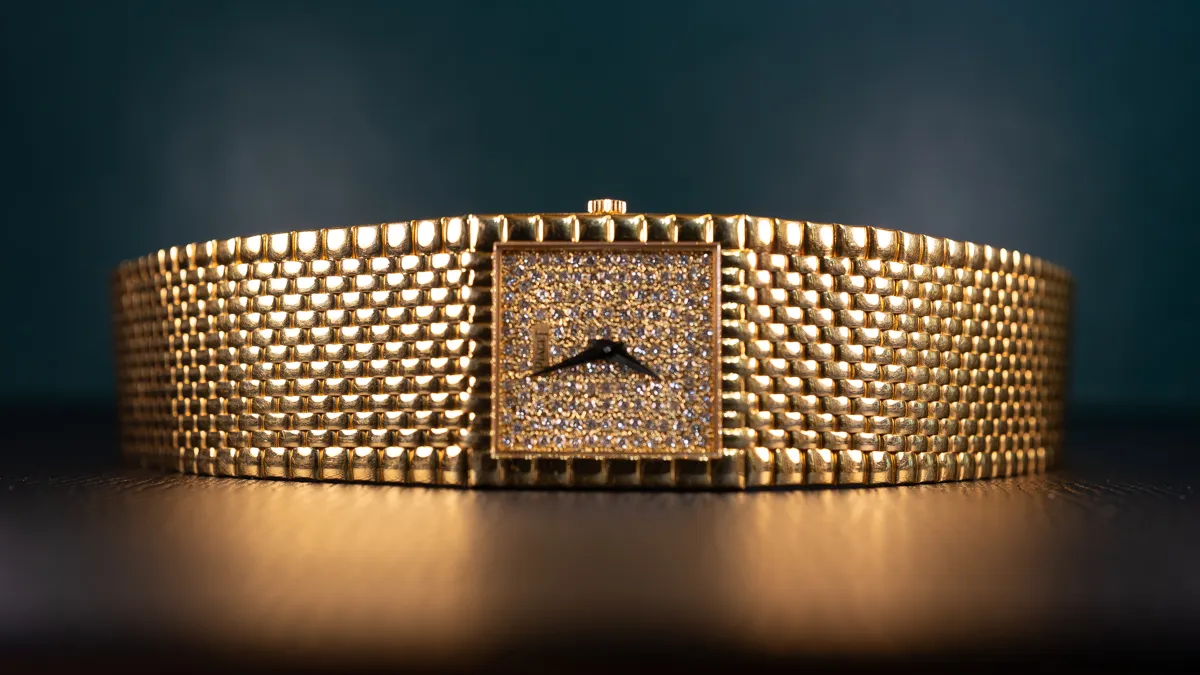
You may also like.
Hollywood’s French Duel
For rival billionaire moguls Bernard Arnault and François-Henri Pinault, it’s high noon in the battle to stake a claim in the movie business. Is Tinseltown big enough for both of them?
Hollywood is famously awash in irony and blood feuds. So perhaps it’s fitting that, after locking horns for decades in Europe over Gucci, Hedi Slimane and the finest Champagnes, Bernard Arnault and François-Henri Pinault have exported their Gallic rivalry across the Atlantic, each billionaire now determined to conquer the epicentre of film and television just as he has vanquished the world of luxury.
The dueling titans are building foundations in Hollywood that could be transformative not only for their many brands, which are chockablock with unplumbed archives, but also for the entertainment business, which knows how to tell a compelling tale. Last September, Pinault, chairman and chief executive of Kering, bought a majority stake in the CAA talent agency for a reported US$2.8 billion (around $4.3 billion) through his family’s private-investment group, Artémis. Kering, a publicly traded company controlled by Pinault, was not directly involved, but the move raised speculation that its brands—which include Saint Laurent, Alexander McQueen, Gucci, Balenciaga and Boucheron—could benefit from entertainment relationships, particularly among celebrities, who remain the world’s most powerful influencers.
Months later, Arnault, chairman and chief executive of LVMH (also a public company), one-upped Pinault by launching an entirely new entertainment studio in partnership with well-connected Hollywood marketing veterans who, in case the move didn’t sting enough, once worked for CAA. Arnault named the studio 22 Montaigne Entertainment, after his company’s plush address in Paris’s 8th arrondissement, and placed his eldest son, Antoine, in charge.
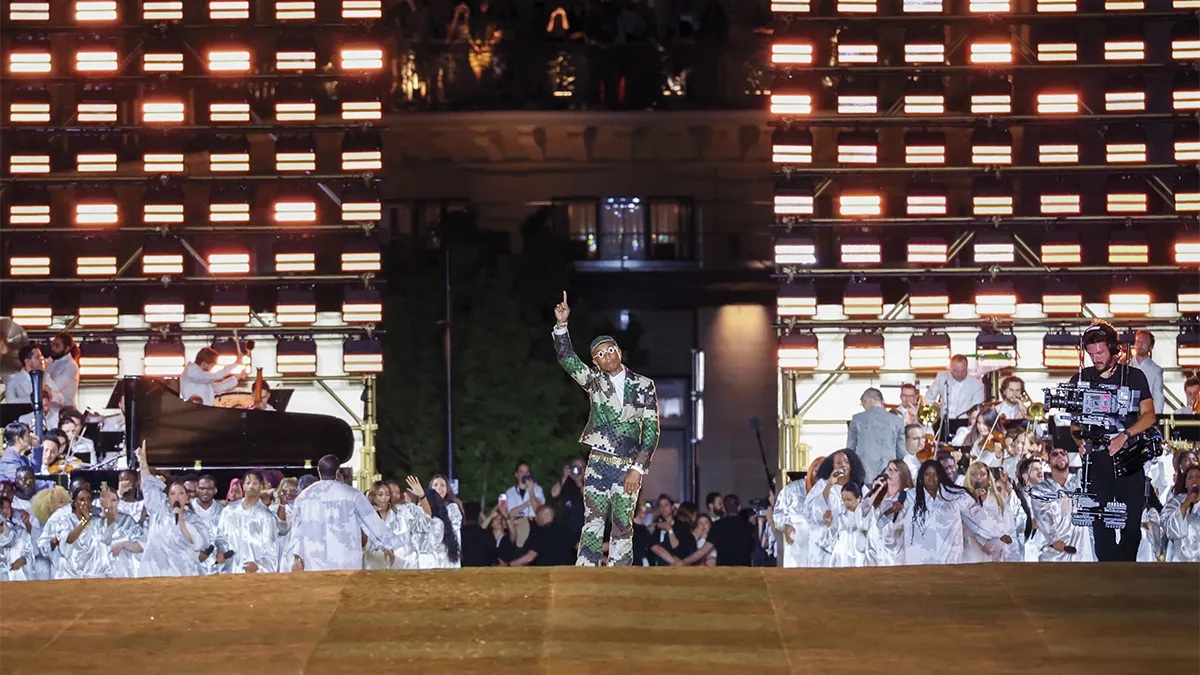
Fashion designer and musician Pharrell Williams walks the runway during the Louis Vuitton menswear show on Paris’s historic Pont Neuf last June.
Peter White/Getty Images
By the time its formation was announced in February, 22 Montaigne, via its new partners at Superconnector Studios, was reportedly already in talks with potential collaborators, such as Imagine Entertainment, founded by Ron Howard and Brian Grazer, and Reese Witherspoon’s Hello Sunshine. The latter, known for The Morning Show and Big Little Lies, focuses on stories about women, who happen to be LVMH’s primary consumers. Imagine the dramatic, not to mention comedic, tales buried in the vaults of a company that owns Louis
Vuitton, Christian Dior, Givenchy, Tiffany & Co. and Dom Pérignon, among dozens of other top names. The possibilities for brand-centric film, television, streaming and podcast projects that can bring their archives to life are practically endless.
What we’re seeing in real time is a collapsing of the traditional walls between entertainment and luxury—or, more bluntly, a disintegration of the space between storytelling and advertising. Fashion houses have long made nimble use of respected contemporary artists, enlisting them for merchandise collaborations in order to inject a dose of highbrow imprimatur into their wares. More recently, this fluidity has infiltrated the music industry: Pharrell Williams, the massively successful recording artist and producer, is not a trained fashion designer but last year was named creative director of Louis Vuitton menswear, where he’s churning out vibe-y videos, shutting down Paris streets with fashion shows, and racking up social-media engagement. Fashion is now aiming squarely for your screens.
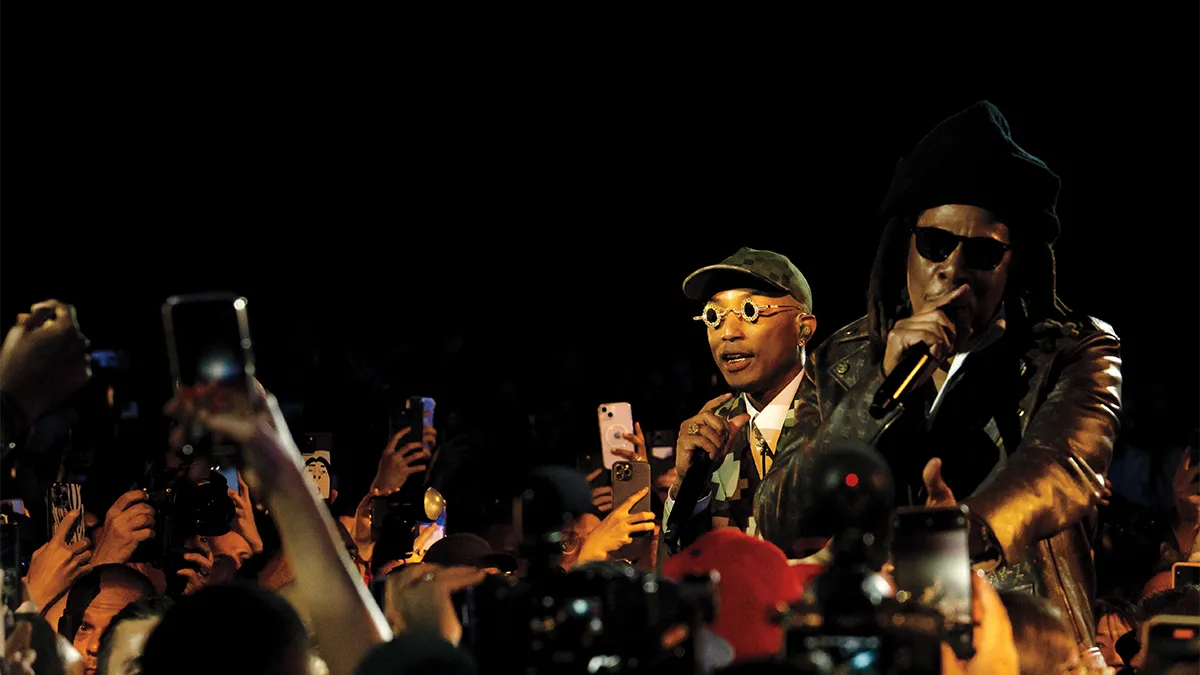
Adrienne Surprenant/Bloomberg/Getty Images
“The sectors of film and art and fashion have become so intertwined today that there’s no separation,” says Robert Burke, chairman of the consulting firm Robert Burke Associates, who counts several luxury giants among his clients.
In front of the camera, fashion and film have been cosy for decades, trading on celebrities’ fame for advertising campaigns and costuming deals.
Designers have always nurtured close liaisons with stars—think of the symbiotic relationship between Hubert de Givenchy and Audrey Hepburn, or the way Giorgio Armani burst into our collective consciousness (and wardrobes) by outfitting Richard Gere in American Gigolo. The occasional lucky release has also proved beneficial: the film adaptation of The Devil Wears Prada, the plot of which had next to nothing to do with the Italian maison, elevated it to household-name status in the 2000s, and a certain jeweller has been dining out on Breakfast at Tiffany’s for over six decades. “Still today, that movie and the image of Audrey Hepburn drive tremendous traffic to the Tiffany store,” Burke says.
Fashion-centric documentaries, from 1995’s Unzipped to Dior and I in 2014, have proved surprisingly appealing, and competition shows à la Project Runway oddly enduring. Now, top houses are recognising film and TV as more than publicity platforms: They see them as a means to expand the mass appetite for high fashion through entertainment, not just via fragrances and wallets.
One of the curiosities about Pinault’s and Arnault’s forays into Hollywood is how secretive they’ve both been about something so very public. (Both declined to comment for this article or to make any executive available for an on-the-record interview.) In fact, while it’s usually buyers who make announcements of this nature, a press release on the sale of the CAA stake was issued by the seller, TPG, which clearly wanted to trumpet the deal to its investors. Pinault was quoted in TPG’s release, noting that CAA would add “increased diversity, both in terms of geographical footprint and business activities” to Artémis’s $43 billion (around $66 billion) in assets. He has nevertheless declined every interview request. His longtime spokesman at Kering says that CAA is a private family-investment matter.
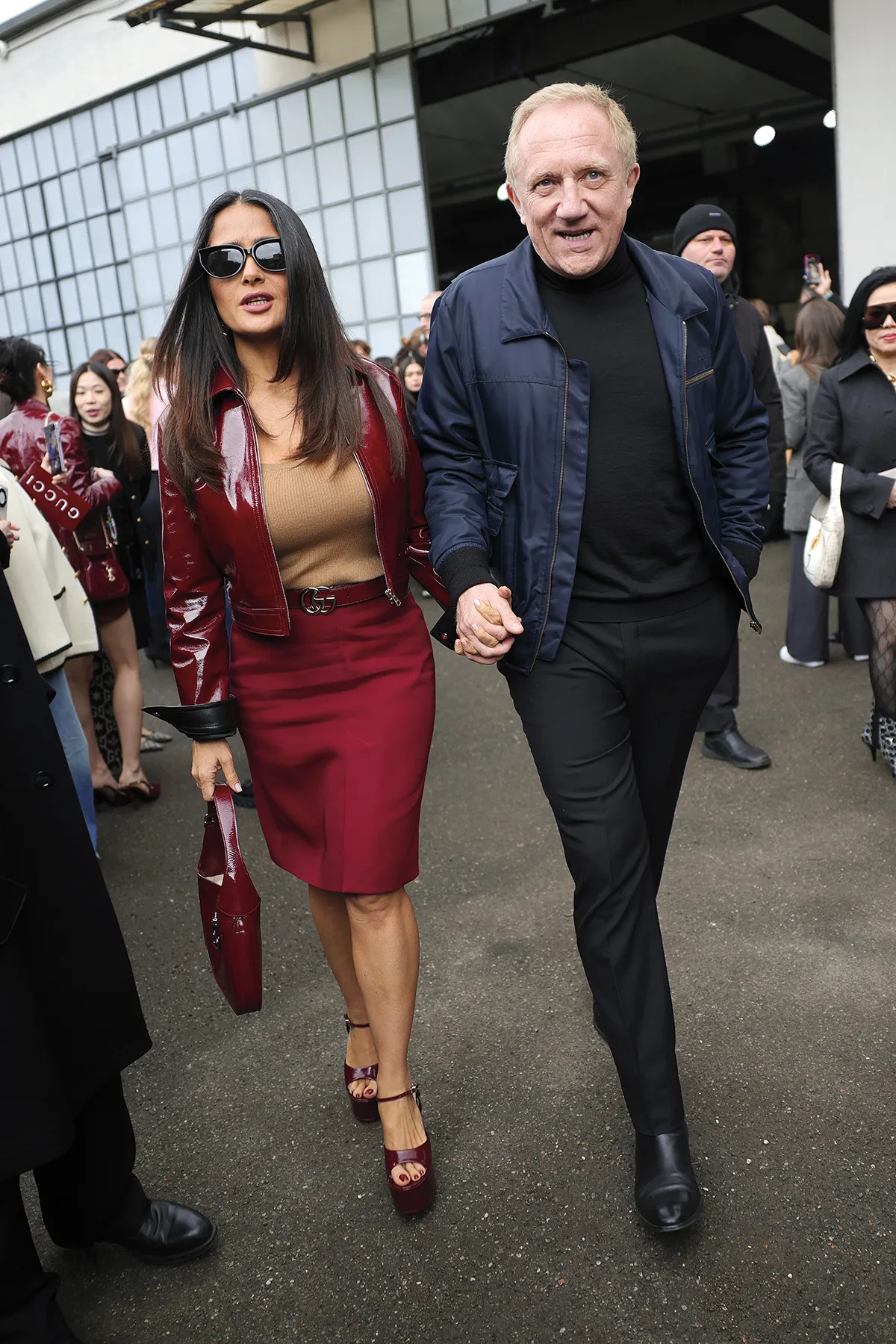
Week in February. Jacopo Raul/Getty Images.
LVMH made its own announcement about 22 Montaigne’s launch, sending out a three-page press release from Paris and serving up a few interviews in the business media with its North American chief executive, Anish Melwani, who will manage the operations of the studio along with Antoine Arnault, head of LVMH image and environment. Melwani’s interviews appear to have been seen within the company as a rare misstep. When the news made global headlines—from the Financial Times to Fortune to Fast Company—LVMH and its partners at Superconnector Studios retreated, halting all interviews. “It took them by surprise that this got the amount of attention it got,” a person close to LVMH tells Robb Report, calling the coverage “overblown”.
Arnault and Pinault are not pioneering the alignment between Hollywood and consumer brands. Nike’s Waffle Iron Entertainment, launched in 2021, already has a first-look deal with Apple TV+ and produced The Day Sports Stood Still for HBO, as well as Apple TV’s Ja Morant docuseries Promiseland, merging sports-oriented content with Nike’s athletic products. In fact, one of 22 Montaigne’s partners at Superconnector, a Hollywood marketer named Jae Goodman, helped create Waffle Iron Entertainment. And last year, Authentic Brands, which owns the intellectual property for dozens of marques, from Barneys New York to Elvis Presley to David Beckham, launched Authentic Studios to build films, television shows and other entertainment around its brands.
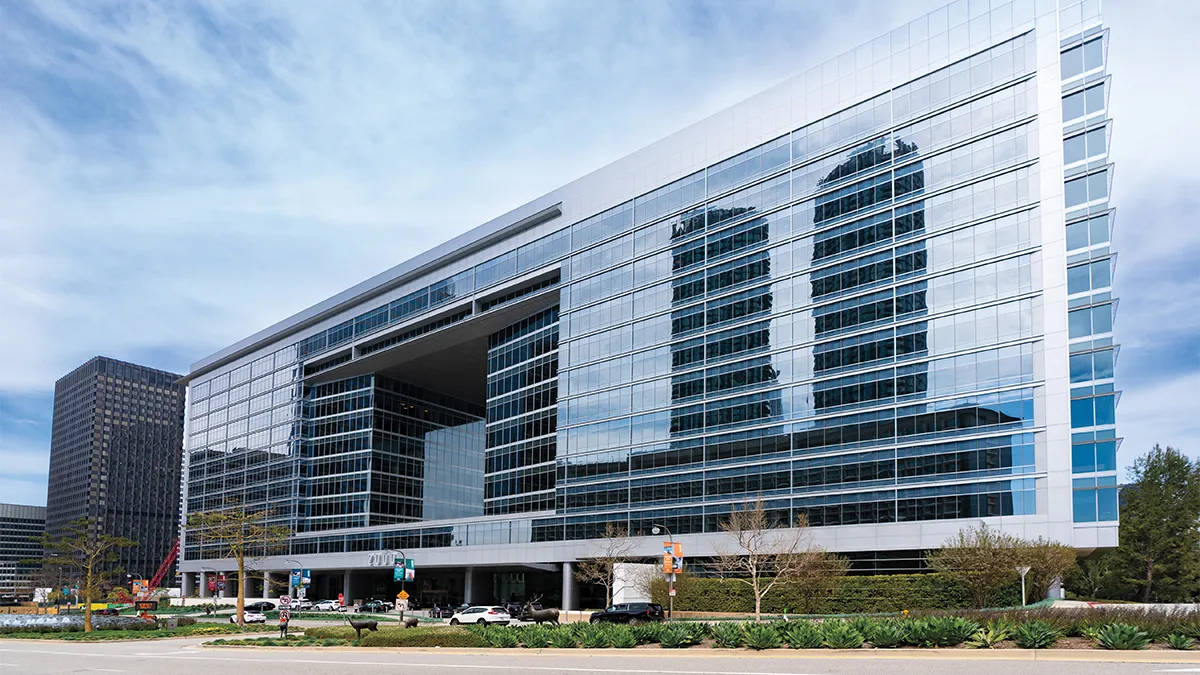
CAA headquarters in L.A.
CAA headquarters in L.A.
AaronP/Bauer-Griffin/GC Images
The approaches taken by the two Frenchmen—the mirthful François-Henri Pinault, known by friends as FHP, and the meticulous Bernard Arnault, affectionately called Monsieur Arnault—reflect how they run their respective corporate empires. In some ways they’re mirror images, each building businesses from luxury goods and related playthings of the rich and famous. Their private family offices even neighbour each other across a quiet plaza in Paris not far from the Grand Palais, with Arnault’s Financière Agache located at 11 rue François Premier, and Financière Pinault just down the rue at number 12.
LVMH dwarfs Kering by many measures. Its 75 brands are deep with heritage, often centuries old, and generated revenues of over $93 billion (around $143 billion) in 2023, while Kering’s dozen or so are younger and produced over $21 billion (around $32 billion) in revenues last year. The conglomerates have been fierce rivals for decades, competing with each other not only for retail sales but also for companies and talent. Their struggle for control of Gucci in the late 1990s, when Tom Ford was arguably the most influential designer on the scene (and Pinault’s father, François, faced off against Arnault), was epic, and top names have often bounced between the two camps, most notably Hedi Slimane, who jumped from LVMH (Dior Homme) to Kering (YSL) and back (Celine). Taking notes, screenwriters?
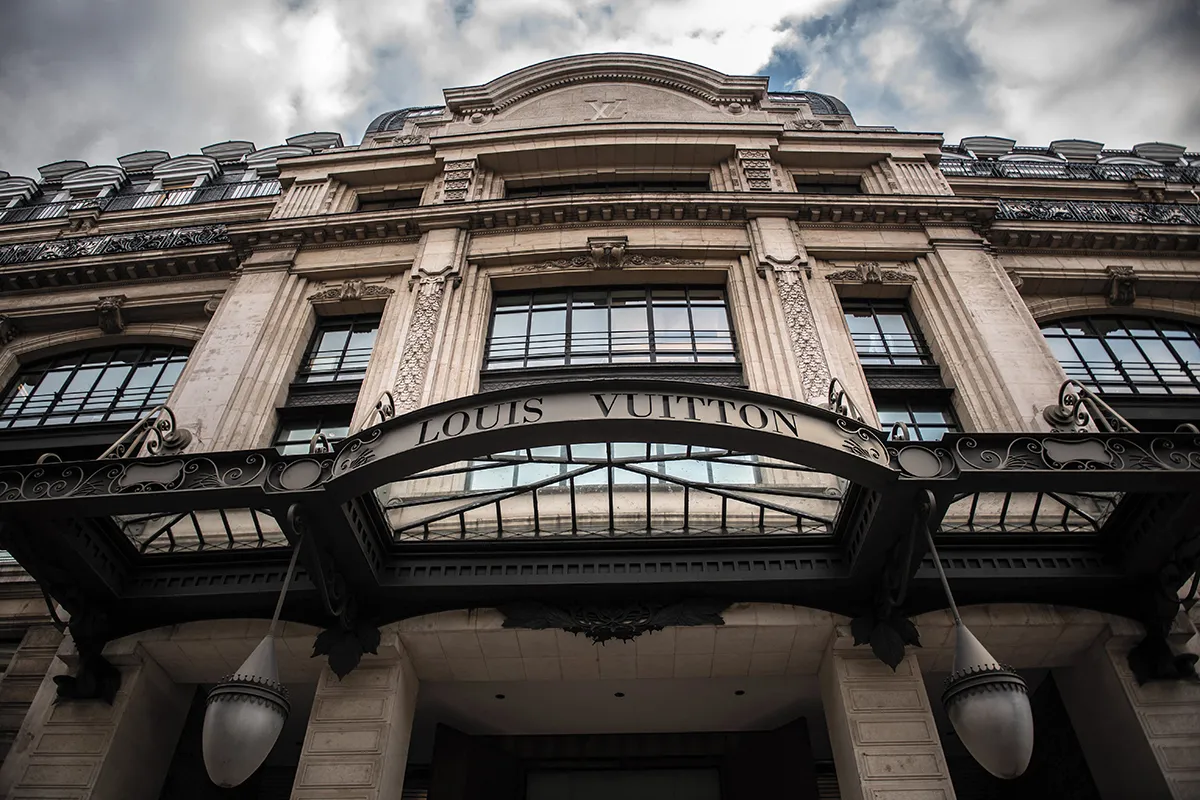
Martin Bureau/AFP/Getty Images
While Arnault is an efficient planner who keeps things centrally organised—opening a Hollywood studio to serve all of LVMH fits his profile perfectly—Pinault can be more capricious and prefers to leave details up to brands and their managers. Arnault’s Hollywood manoeuvring appears coolly calculated, while Pinault’s multibillion-dollar investment for 56 percent of CAA has proved something of a head-scratcher to observers from both industries. “If you would have asked me who would come along to acquire CAA, it certainly wouldn’t have been a company that was rooted in fashion and luxury,” says Keith Baptista, cofounder of Prodject, which forged early connections between fashion and entertainment with shows such as Rihanna’s Savage x Fenty special on Prime Video.
Still, in an age when celebrities are the most valuable influencers (think Anya Taylor-Joy’s gushy Instagram post thanking Dior, Tiffany and Jaeger-LeCoultre for her Oscars ensemble in March, which has garnered 2.8 million likes from her 10.6 million followers as of press time, or Taylor Swift’s 284 million Instagram followers, which make her a one-woman media empire) and when creative direction is more about cultural access than apparel design, Pinault now has one of the most potent contact lists on the planet.
CAA represents thousands of actors, directors, models, musical artists, athletes, coaches and other stars. Its agents are some of the world’s most adroit dealmakers. The firm, whose stone-and-glass headquarters looms over Century City, California, boasts that it pioneered talent agencies’ incursions into the sports business, investment banking, venture funds and brand-marketing services, not to mention developing a business arm in China, which is every luxury executive’s fervent dream market.
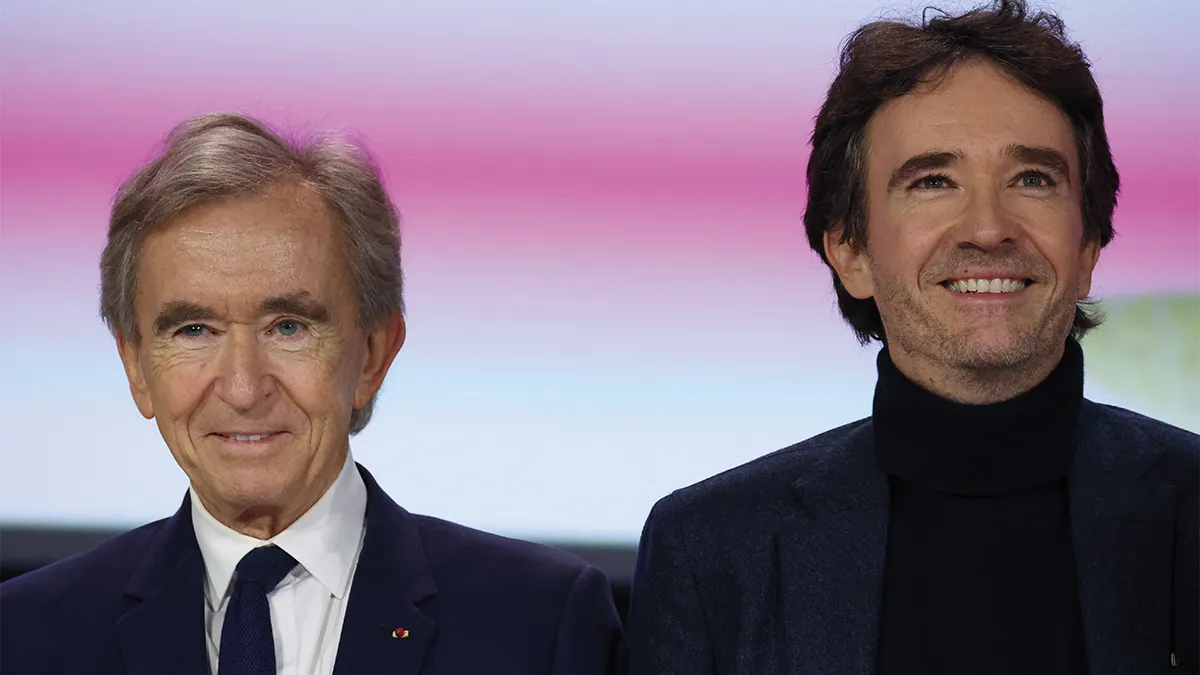
Emmanuel Dunand/AFP/Getty Images
Hollywood observers suggest the real winners of the deal are the co-chairmen of CAA—Bryan Lourd, Richard Lovett, and Kevin Huvane—who have an opportunity to unload part of their own stakes for as much as $200 million (around $310 million), according to a Financial Times report last September. Then there’s former majority owner TPG, the financial-services firm that sold its shares to Artémis. TPG, which first bought a piece of CAA in 2010, had been looking to cash out of the long-held investment and realise its gains without having to invest more in the agency’s future growth. Few clear options emerged until Pinault happened along.
“Do I think it’s good for Richard, Kevin and the management team? Yes,” says an executive at a rival agency, who suggests that CAA is a trophy acquisition for the Pinaults. In addition to the family’s stake in Kering, CAA will sit alongside a billionaire’s playground of other assets: Christie’s auction house, Artémis Domaines estates, French soccer team Stade Rennais FC, several media and tech investments that include a stake in TikTok-owner ByteDance, and a substantial private art collection.
This executive questions, however, whether the family is prepared to invest the additional money required to expand CAA as its rivals, including United Talent Agency and William Morris Endeavor, push into new fields, and as revenue streams morph. “Do I think it’s good for CAA in the long run? No.”

Barry King/Alamy
But from CAA’s perspective, according to an insider there, Pinault represents a smart, hands-off owner much like TPG was, and not just a private-equity investor with a short-term outlook. It’s expected that board seats will be taken by either Pinault or his Artémis deputy chief executives, Héloïse Temple-Boyer, who sits on Kering’s board, and Alban Gréget.
“We’re not part of his company. We’re just another investment,” this insider says of Pinault. “He knows what he knows. He knows what he doesn’t know. He lets people manage. TPG was the same way.”
But CAA also apparently believes that Pinault has something to offer the agency other than cash. “He has a familiarity in businesses driven by talent. That’s something that he has that normal private equity doesn’t,” the insider says. “We’re just at the beginning stages of figuring out what those opportunities are.”
Adding to the trophy speculation is the presence of Pinault’s wife, the 57-year-old Oscar-nominated actress Salma Hayek, the mother of his youngest child. (Another of his four children is just a year older and is the son of supermodel Linda Evangelista.) Pinault, who is 61, is often photographed standing behind Hayek, unidentified by paparazzi but holding her coat and bag while she signs autographs.
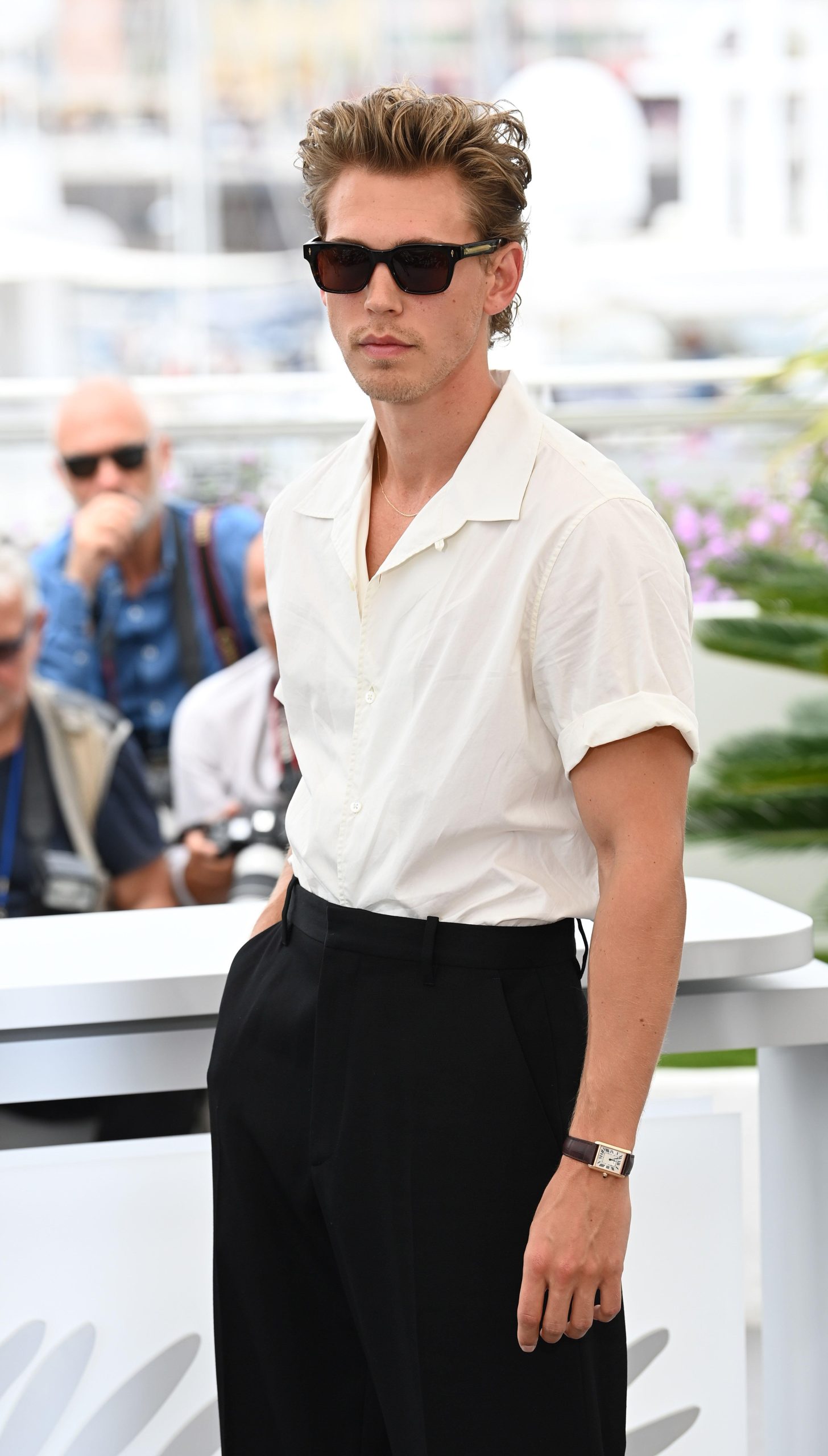
Hayek is represented by CAA, which now answers to her husband. A person who has worked under Pinault for years notes that the actress is close with several of CAA’s principals. “If you want my opinion,” they say, “I think the whole thing is kind of strange. I think it’s Salma-inspired.”
Several Hollywood executives, none of whom would speak on the record, challenged initial speculation that Pinault’s control of CAA will help Kering recruit talent to wear or advertise its labels. Proposing such alliances might instead raise suspicions that they are more for the benefit of Kering and CAA corporately.
“You can’t just jam people in. The agents are going to ask for the richest deal,” says another agency rival, who cites the fiduciary responsibility that agents have for their clients’ best interests. What’s more, the rival adds, “The people who run fashion houses don’t give a shit about the corporate synergies. You can’t tell them they have to use Tom Cruise.”
Like LVMH, Kering is also backing at least one filmmaking venture in support of its brands’ entertainment ambitions. Saint Laurent made a splash at Cannes last year, not just on the red car- pet but also by producing a short cowboy movie by acclaimed Spanish director Pedro Almodóvar, starring Ethan Hawke and Pedro Pascal, called Strange Way of Life.
The title is the first from Saint Laurent Productions, a film-production company the label launched last year, led by its creative director, Anthony Vaccarello. The designer has more projects in the works by Oscar-winning director Paolo Sorrentino and heavyweights David Cronenberg, Abel Ferrara, Wong Kar-wai, Jim Jarmusch and Gaspar Noé.
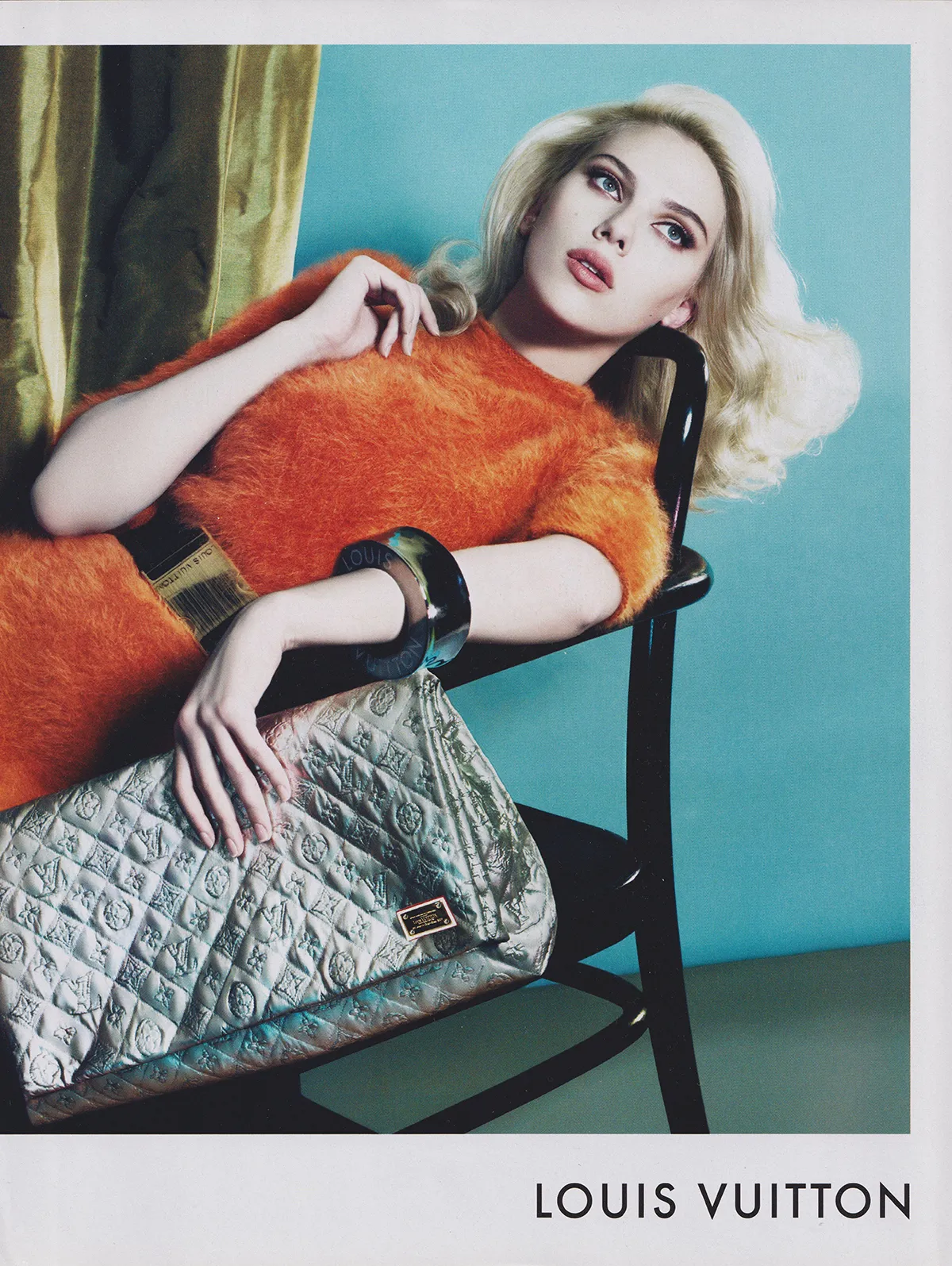
Vaccarello designed the costumes for Strange Way of Life, so it’s a safe bet that he’ll do the same for future films. People close to the label say the venture began because Vaccarello, a film lover, pressed for the new creative outlet. (He’s not the first designer to catch the movie bug: Tom Ford directed two acclaimed—and, naturally, stylish—features before selling his eponymous brand to Estée Lauder last year; he now focuses full-time on moviemaking.) At the Saint Laurent Productions launch in April 2023, Vaccarello told Variety that filmmaking gives him “the opportunity to expand the vision I have for Saint Laurent through a medium that has more permanence than clothes”.
“You can still see a film in 10 or 30 years, if it’s good,” the designer said. “In some ways, making a film can be more impactful than a seasonal collection. For me it’s a natural extension to another field of creativity that perhaps is more general and popular.”
One more thing promises to be new and fascinatingly strange about these luxury conglomerates’ invasion of the Hollywood jungle: their investments will certainly make odd bedfellows, albeit indirectly, of Pinault and Arnault.
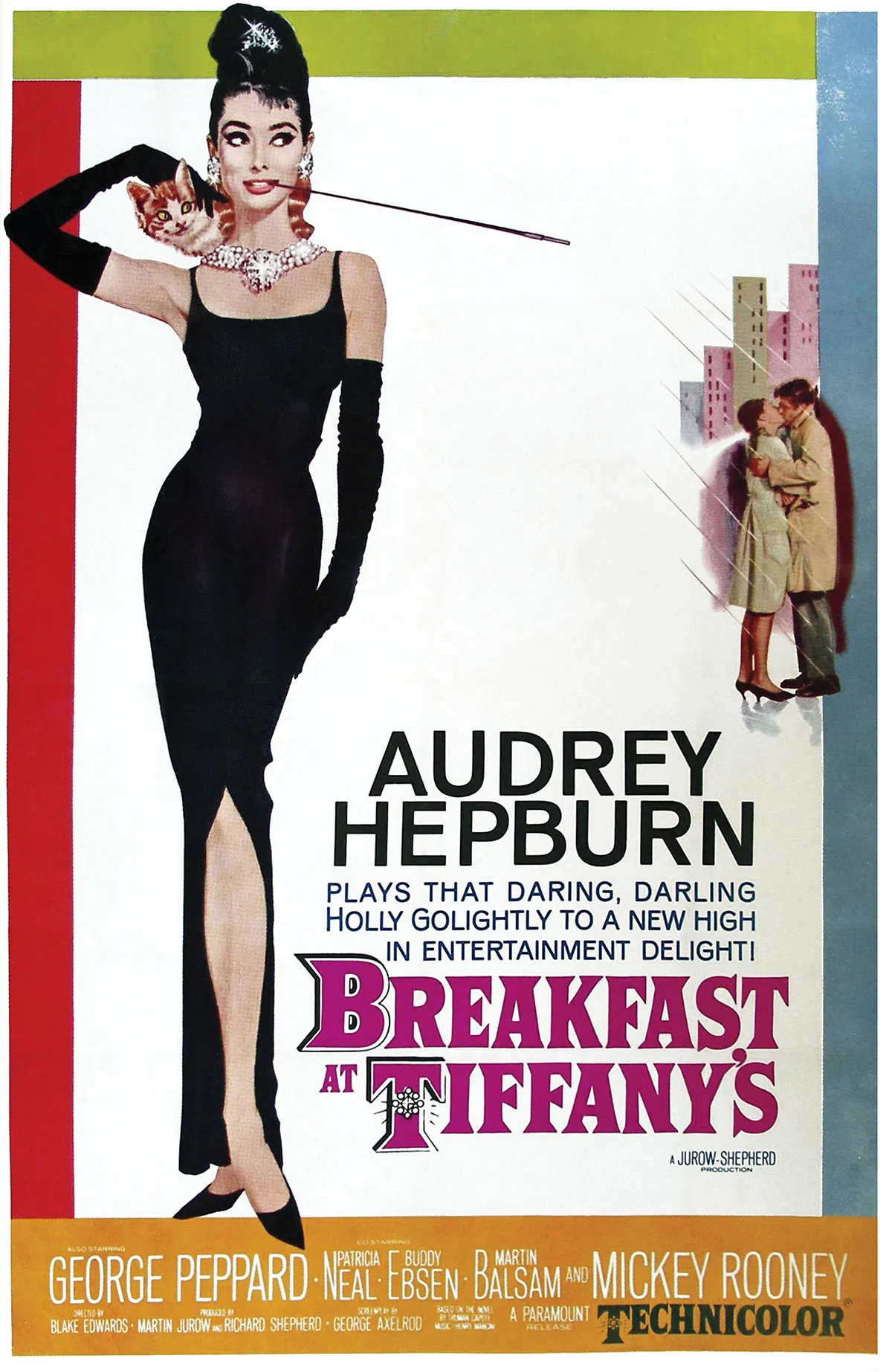
Alamy
There is every likelihood that Arnault’s 22 Montaigne will soon be dealmaking with Pinault’s CAA to lock in directors, writers and stars. Scarlett Johansson is both a CAA client and a Louis Vuitton brand ambassador. Natalie Portman, also repped by CAA, is a leading face for Arnault’s pet label, Dior, which is the first luxury house he bought when building LVMH.
Such crossovers aren’t unusual in Hollywood, where individuals are accustomed to working for rival studios or networks. Unheard of, though, is Arnault’s paying Pinault, via CAA, for the privilege—and here’s our elevator pitch—of signing Ryan Gosling to a Netflix drama, directed by Steven Spielberg, that tells the story of a 17th-century Benedictine monk who perfected the making of Champagne. Dom Pérignon: the Movie, coming soon?
Illustration by SAM GREEN
You may also like.
How to Style Your Loose-Fit Garments This Spring
A sprawling estate in the South of France provides the backdrop for the season’s loose fits and chic separates.
There’s very little innovation without simplification—after all, no one wins friends or influences people by making things harder. So it’s no surprise that spring’s best new clothing feels lighter, looser, fresher—and a lot easier to wear than all the layers you may have donned over the winter.
To celebrate that happy fact, we traveled to Provence—the region that perfected the beautiful life—to capture the season’s finest wares in an environment that reflects their carefree aura. And whether you spend this spring swaddled in Alanui’s enviable knitwear or suited up in Brunello Cucinelli, you should be able to do what the models in the next several images are doing: Relax.
All Photographed by Zeb Daemen Styled by Alex Badia
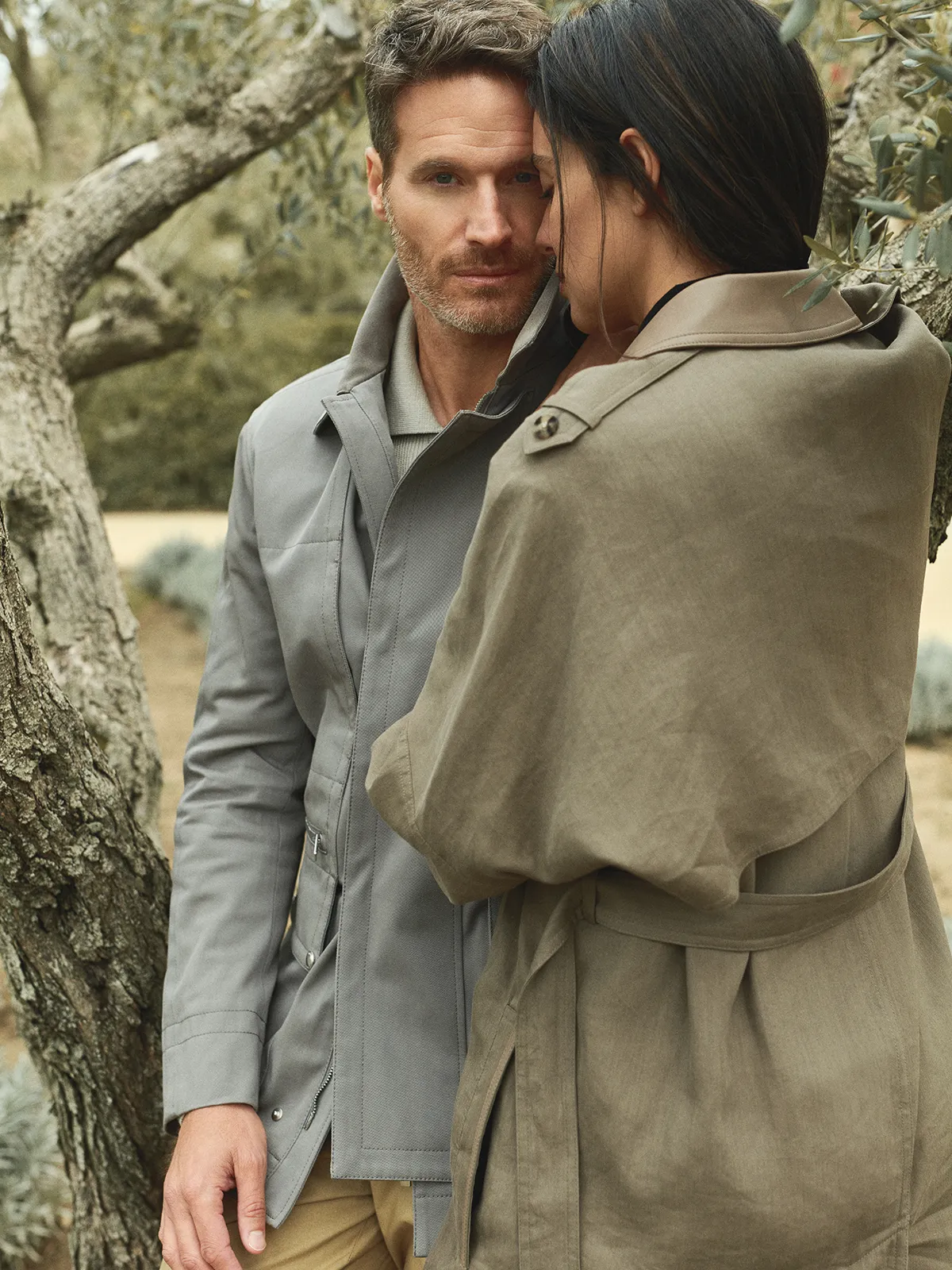
On him: Tod’s cotton jacket, $4,230; Corneliani cotton knit shirt, $1,285; Officine Générale cotton pants, $550. On her: Hermès linen overcoat with leather collar, $10,135; Chloé wool turtleneck sweater, $1,345.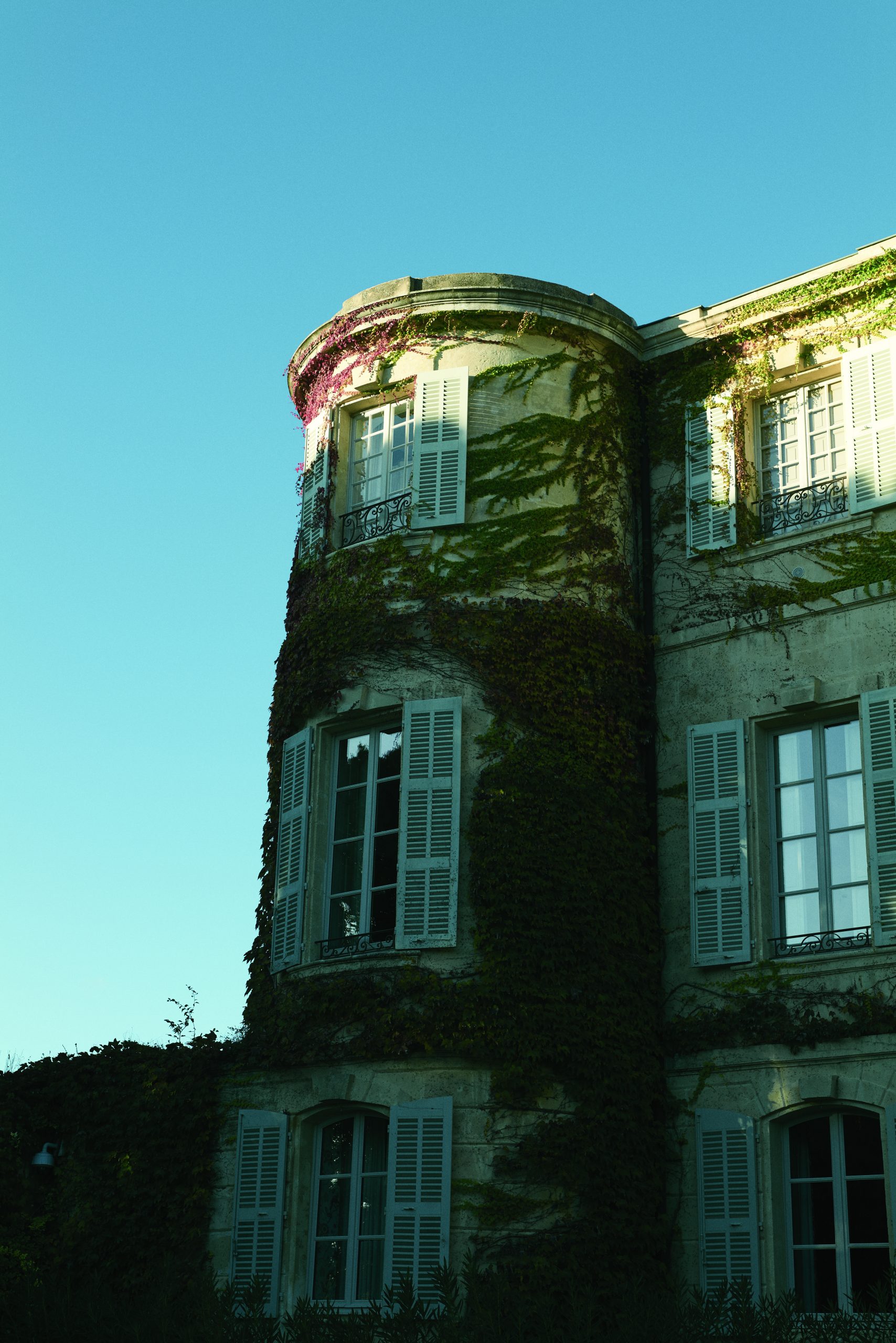
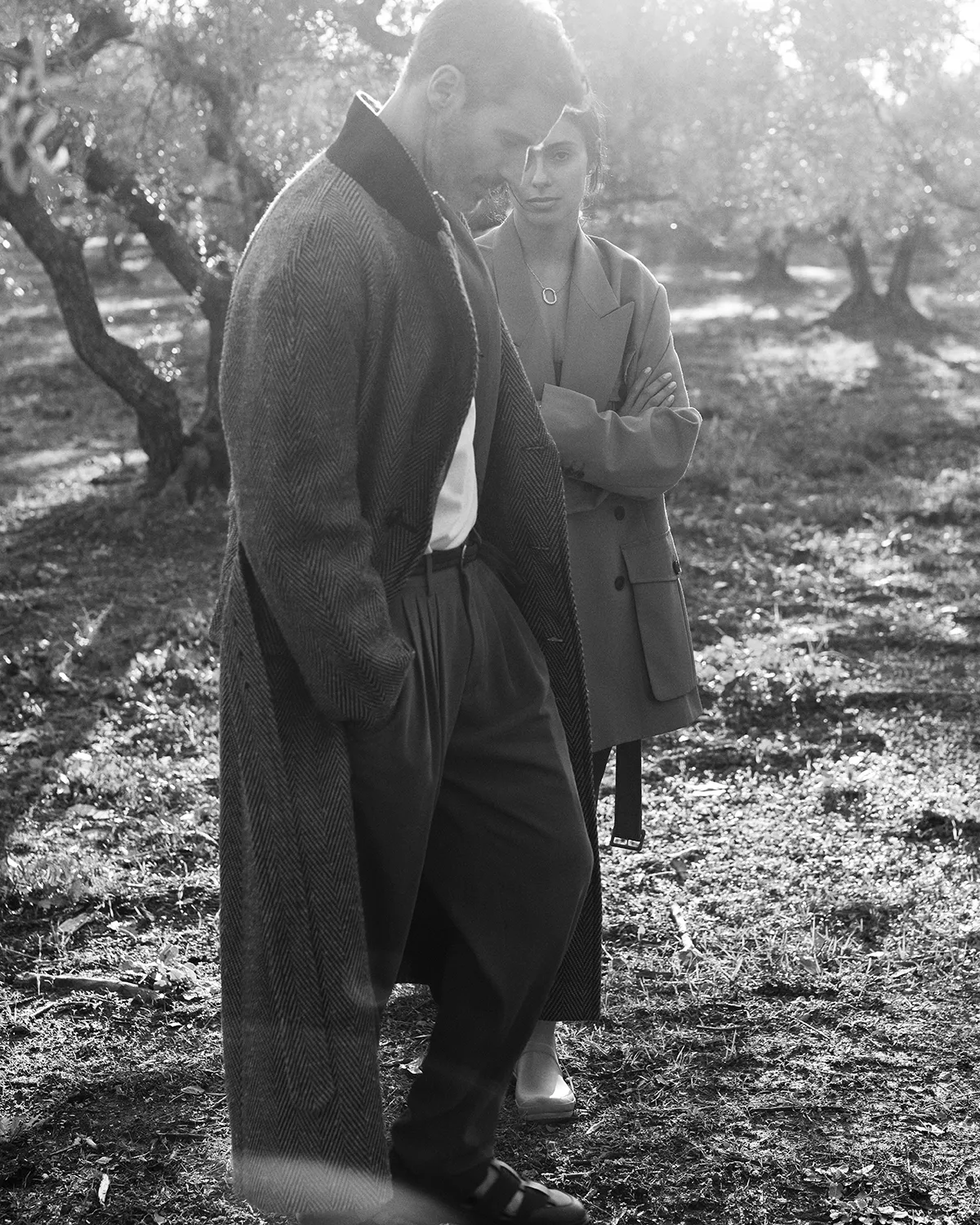
On him: Dries Van Noten brown linen, viscose and silk coat, $3,610; Ralph Lauren Purple Label white cotton and silk henley shirt, $600; Giorgio Armani cognac linen pants, $3,170, and brown leather belt, $640; Hermès black sandals with notched sole in liquorice cotton serge and calfskin, $1,390. On her: Dries Van Noten camel cotton coat, $2,555; Hermès red knitted cropped top, $2,725, bandeau, $2,725, and skirt (worn as a dress), $3,515; Hunter olive-leaf boots, $280; Tiffany & Co. Lock necklace in 18-karat yellow gold, $6,355.
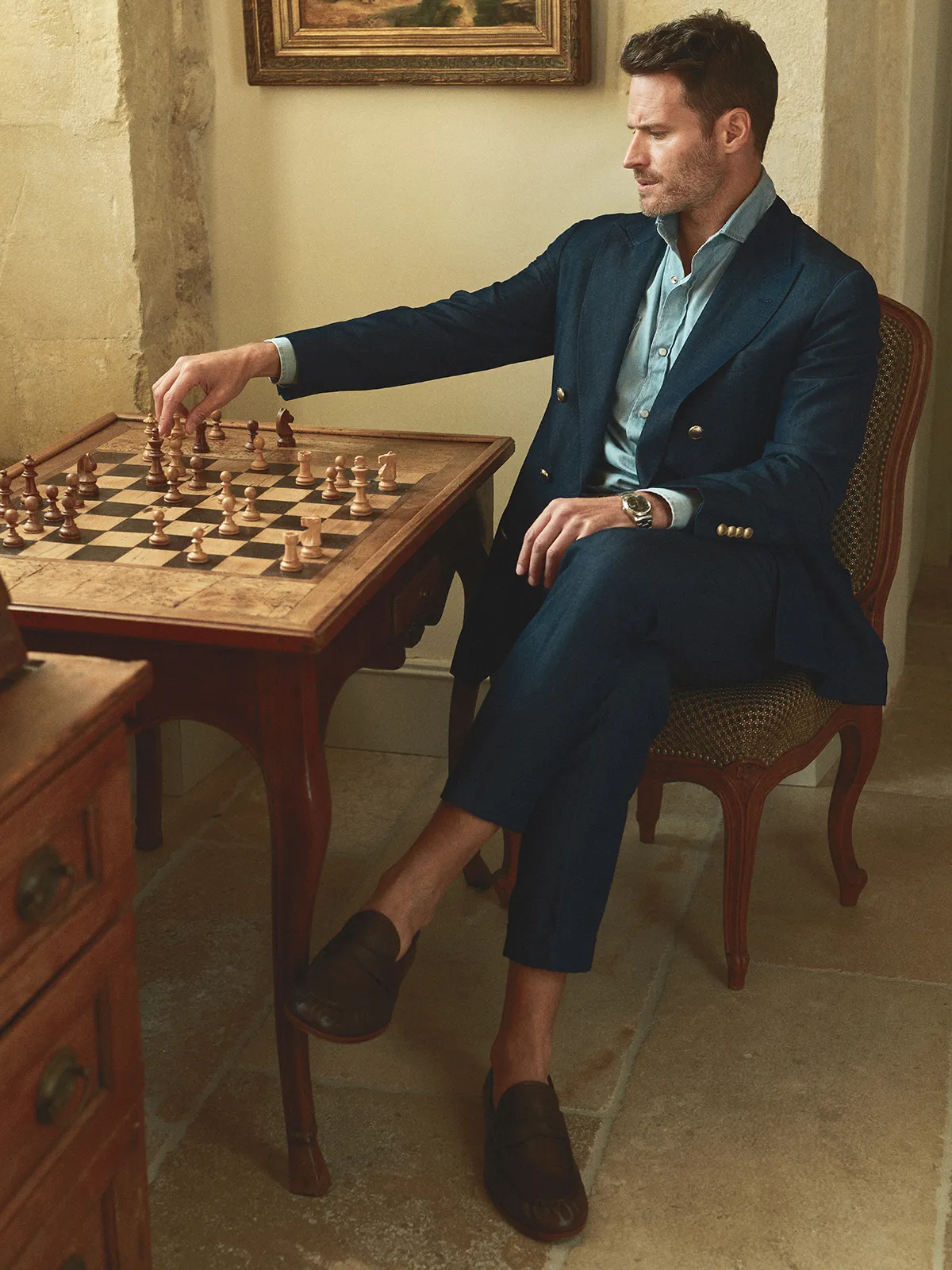
Brunello Cucinelli wool and linen denim-effect-twill one-and-a-half-breasted suit, $9,220, and denim shirt, $1,740; Tod’s leather loafers, $1,580; Rolex Datejust, stylist’s own.
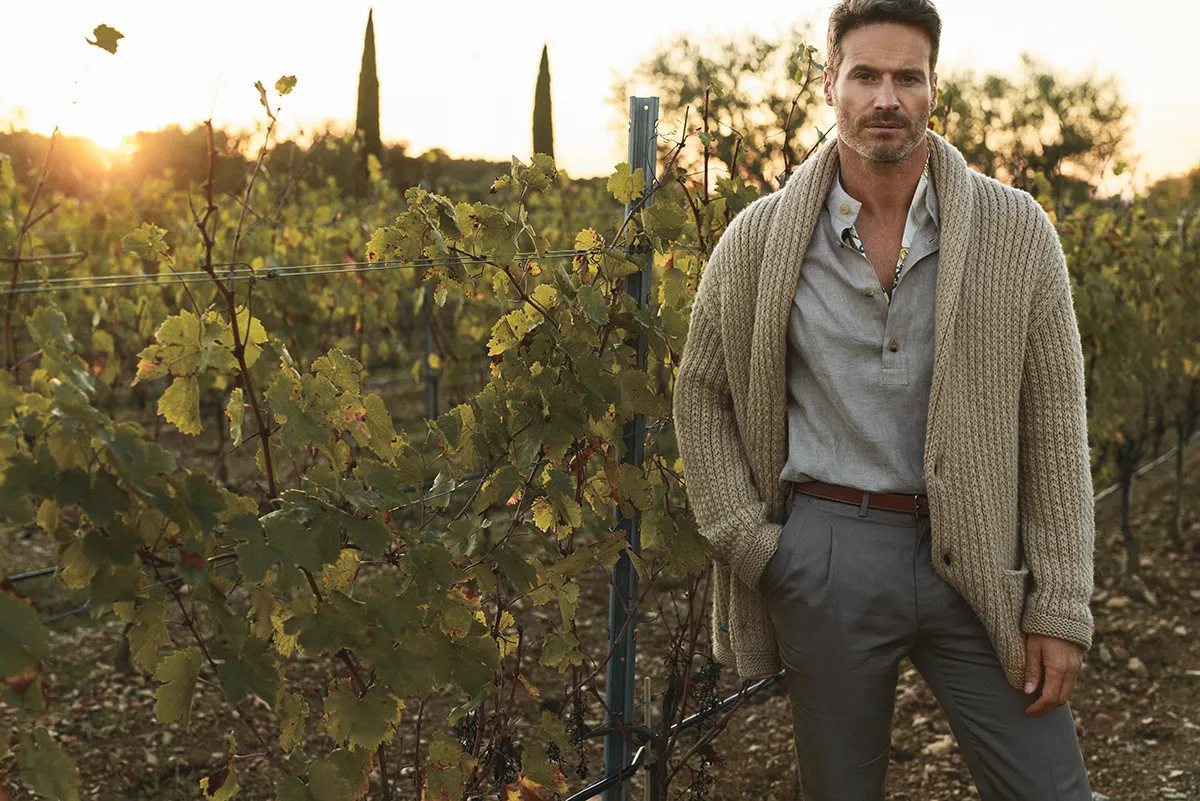
Alanui cashmere and cotton cardigan, $3,835; Loro Piana linen shirt, $1,360; Kiton silk and linen pants, $13,070 (for full suit); Hermès silk scarf, $325; Giubert leather belt, $425.
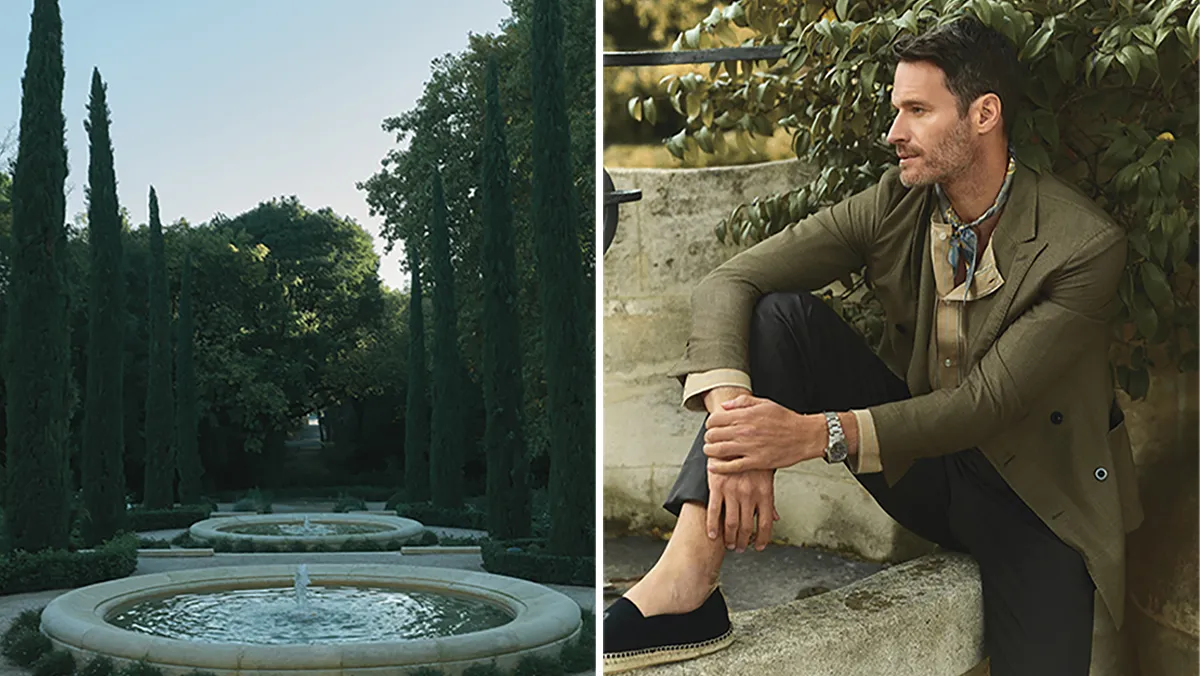
On him: Boglioli wool blazer, $2,495; Officine Générale cotton shirt, $490; Berluti cotton pants, $1,240; Hermès silk Twilly scarf, $325; Ralph Lauren Purple Label canvas espadrilles, $750.
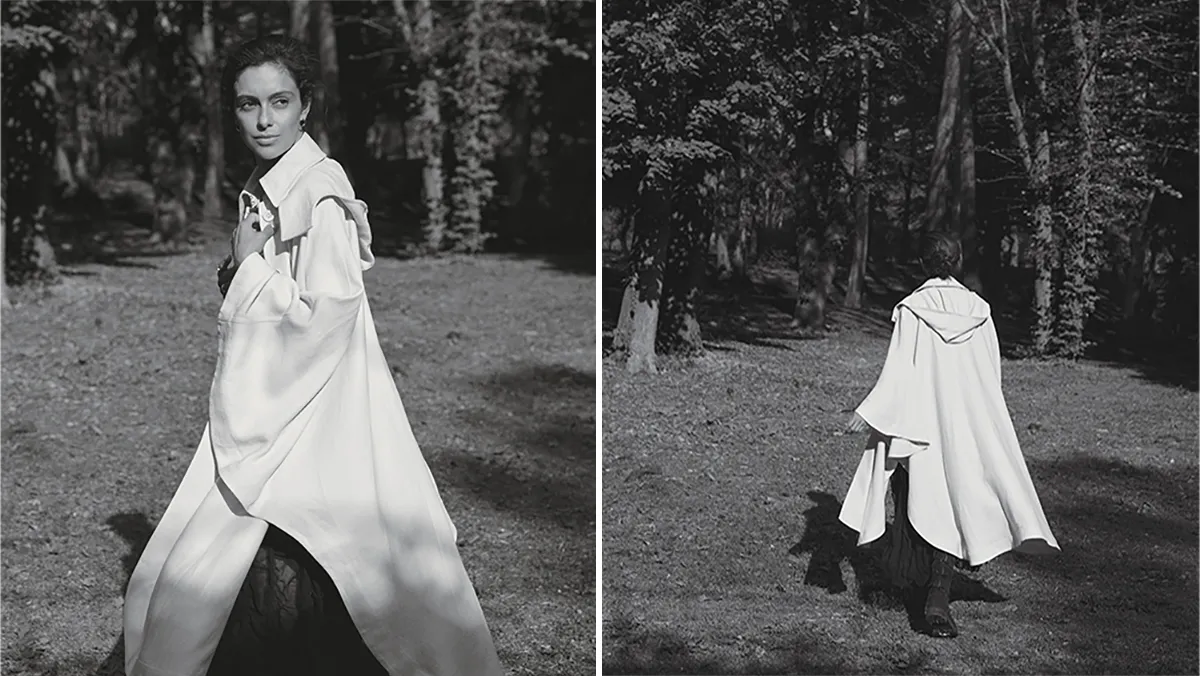
Chloé coconut-milk linen-crepe sable hooded cape (price upon request); Dior black silk skirt with ruffles (price upon request) and fringed canvas boots (price upon request); Piaget Possession open hoop earrings in 18-karat rose gold and diamonds, $7,490, open ring in 18-karat rose gold and diamonds, $7,565, and Decor Palace ring in 18-karat rose gold and diamonds, $6,280.
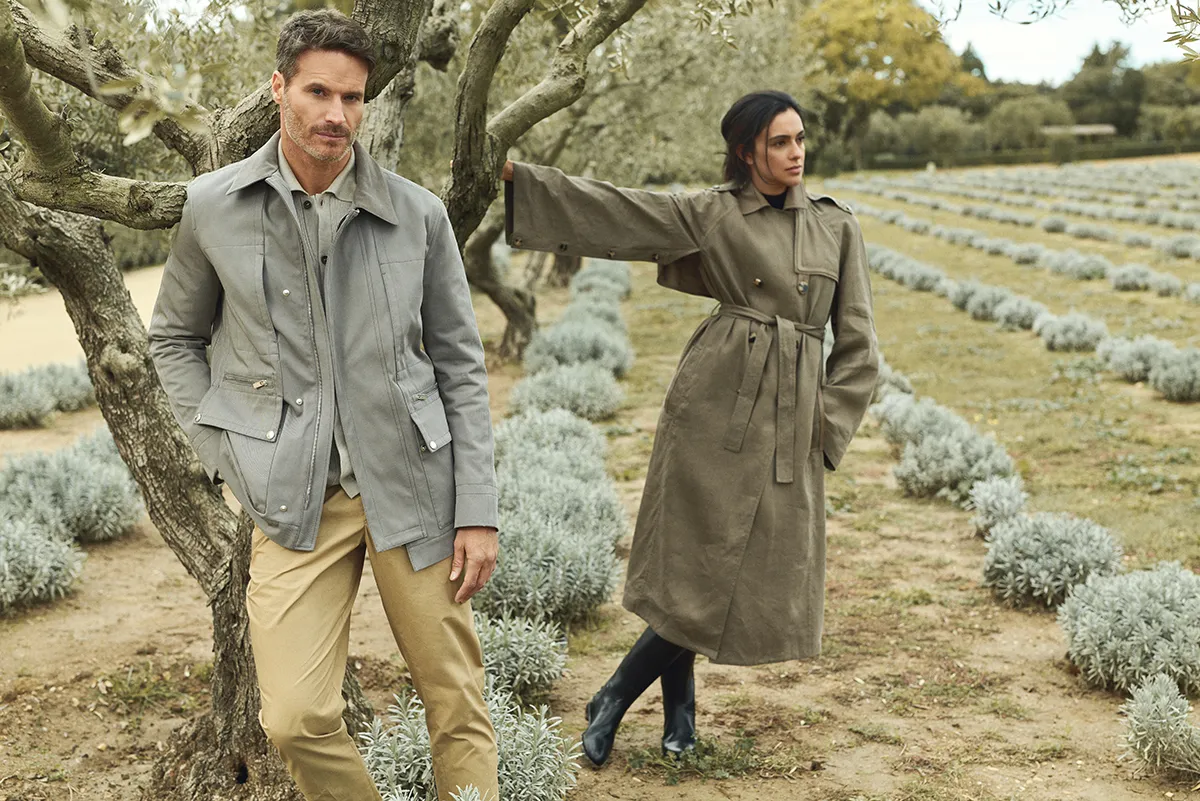
On him: Tod’s cotton jacket, $4,230; Corneliani cotton knit shirt, $1,285; Officine Générale cotton pants, $550. On her: Hermès linen overcoat with leather collar, $10,135, and leather boots, $3,985; Chloé wool turtleneck sweater, $1,345.
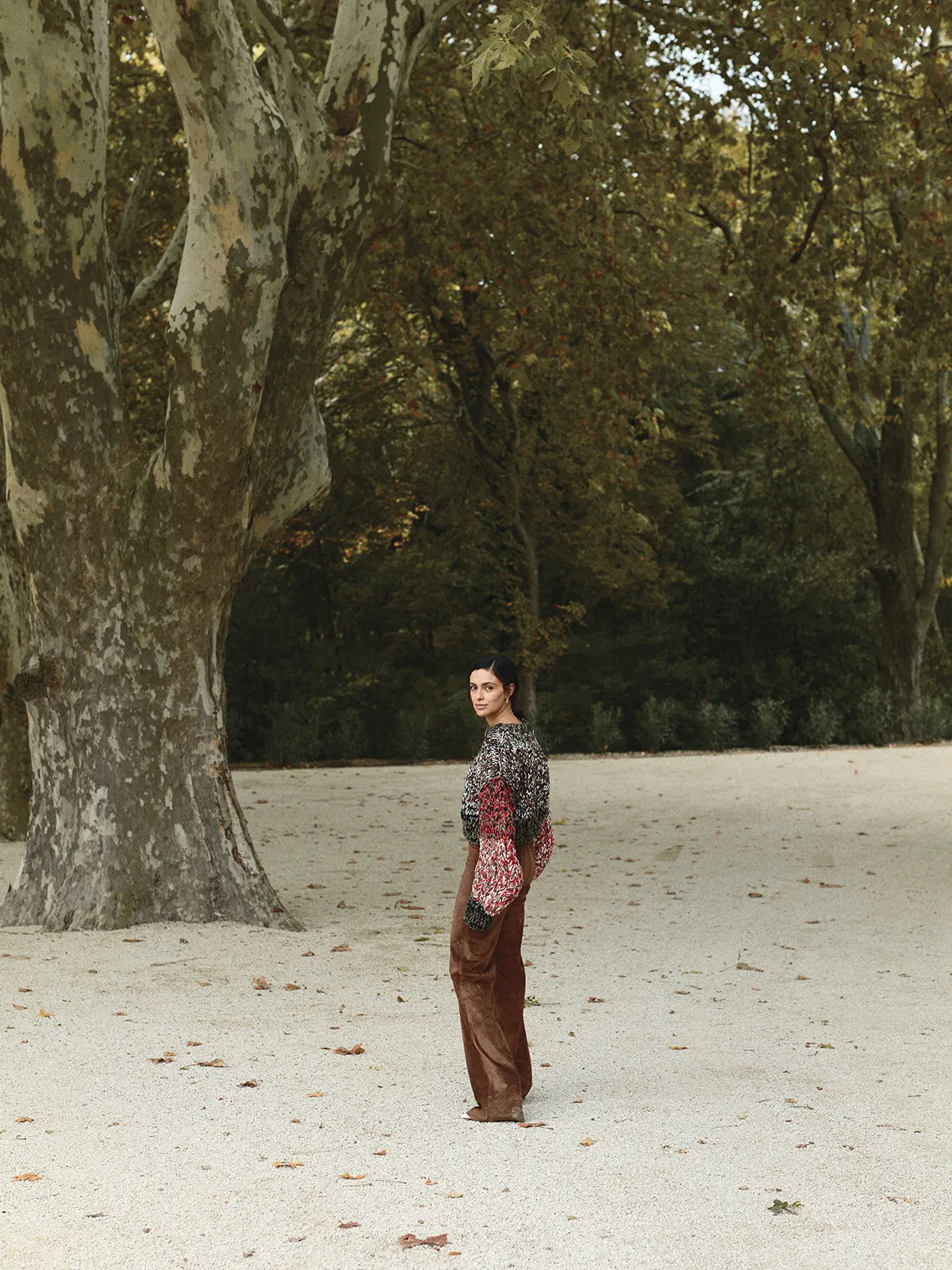
On her: Loewe wool sweater, $4,160, and suede trousers (price upon request); Dries Van Noten shoes (price upon request).
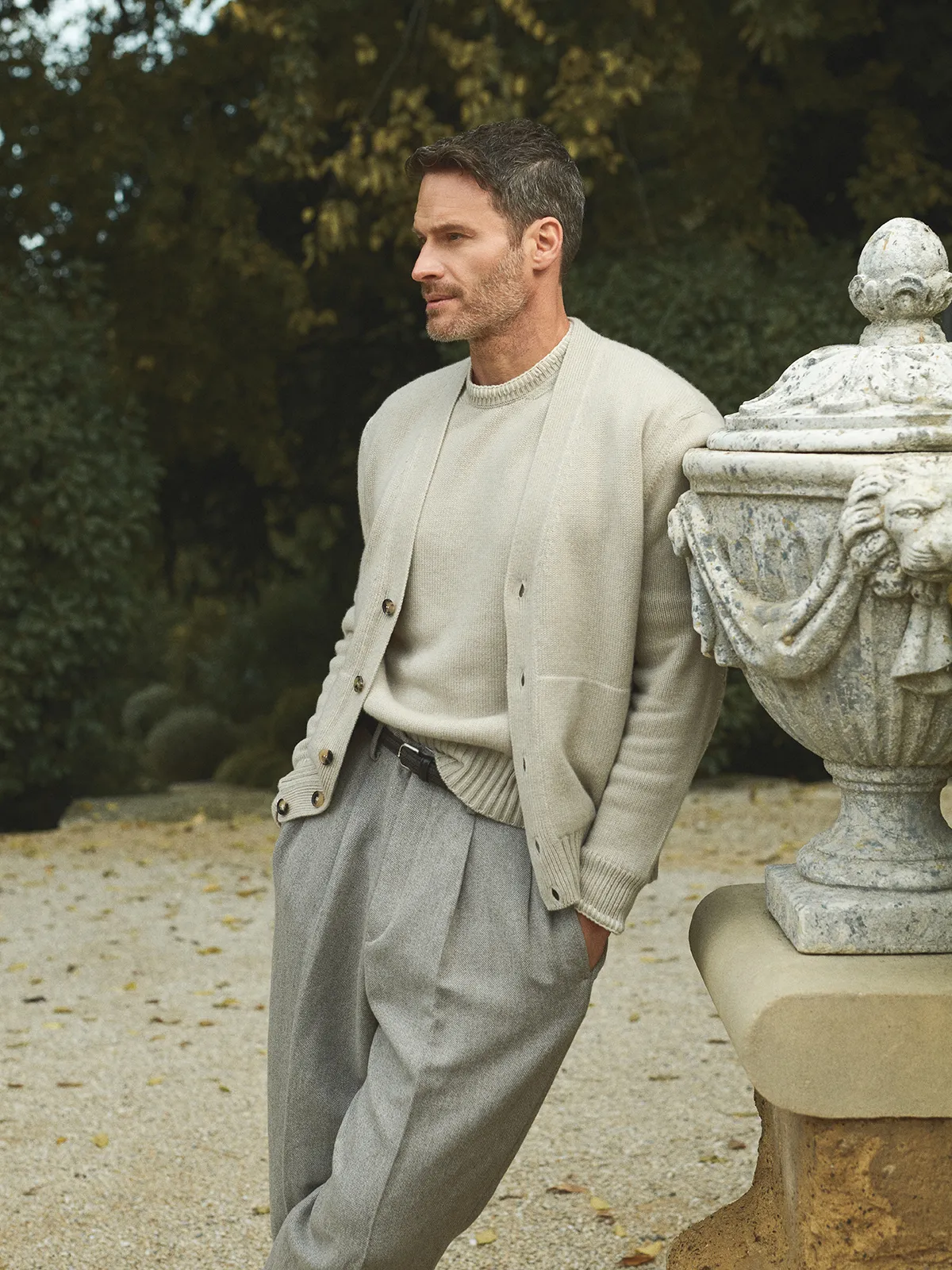
On him: Loro Piana baby cashmere cardigan, $7,185, sweater, $4,765, and wool, linen and cashmere pants, $2,120; Giorgio Armani belt, $645.
Photographed at Chateau d’Estoublon.
Casting and Market Editor, Men’s: Luis Campuzano Market Editor, Women’s: Emily Mercer
Models: David Miller and Gabriela Salvadó
Senior Fashion Market Editor, Accessories: Thomas Waller Watch and Jewellery Editor: Paige Reddinger
Fashion Assistant: Annelise Lombart-Platet
Makeup Artist: Vera Dierckx using Less Is More Organics Cosmetics Hairstylist: Eduardo Bravo
Photo Director: Irene Opezzo Photo Assistant: Koen Vernimmen Production: yours,






